|
Dear Only Child, Life wasn’t supposed to turn out this way. It’s been you and I for almost five years now. Daddy, too, of course. But you and I have spent a lot of time together over the years. Each summer I was home from work [I’m a teacher], and I thought it would be the last one of just us together. I tried to make the most of our alone time together. Remember, the time we laid in the hammocks after looking at the sunflowers? We just stared at the sky while I counted my blessings. You giggled and stuck your feet in my face. We walked in streams, played in sandboxes, and looked at fish in aquariums. Summer turned into Fall. Fall into Winter and Winter into Spring. We went to pumpkin patches, hiked in the mountains, rode train rides, saw Santa, sipped hot cocoa, spent a lot of time with Grandma and Pop, tried ice-skating, tried (and hated soccer), and just like that we were back in the hammocks after looking at the sunflowers. Still no siblings yet. I felt bad that we couldn’t give you a little brother or sister yet. But lying in the hammocks that day, you turned your sweet little face to me and said, “Thanks for taking me here. I’m having really fun.” Thank you for saying that. Dear only child, we want another baby but know that you will always be enough for your daddy and me. No matter what happens. That day in the hammock your daddy and I were in the middle of the adoption process. I felt so at peace. I had you right next to me, my little buddy. I was so thankful for all our time spent together and that life didn’t work out how I planned. This way was better. Then something awful happened. A month later Grandma died unexpectedly. You were confused. I was, and still am, so sad. Our adoption got delayed. Dear only child, life wasn’t supposed to turn out this way. I’m so sorry that you are so young and have known so much grief. But look at you. I’m so proud and thankful for all that you have become. Despite everything that has happened you are sensitive, funny, loving, resilient, compassionate, and curious. I’m so glad that you are my child. Dear only child, our adoption is active now. We could have another child soon. Whatever happens, I’ll forever treasure all the time we spent just you and me. Here's to 2024. I love you, Mommy
2 Comments
At the time of writing this, it’s been 3 years and 4 months since the doctors told me that I could not get pregnant again for the foreseeable future. It would be too dangerous with my brain aneurysm. After receiving that diagnosis, I was a bit relieved. “Get pregnant again? No way. No time soon,” I thought to myself. After all, I had a 6 month old who still had some sleepless nights and battles at naptime. My body was still recovering from a c-section and everything postpartum. Breastfeeding and pumping were like full time jobs. And the memories of 9 months of all day nausea and throwing up intensely in the first-second trimesters were still too fresh. “Thank you, doctor. I will take your advice. No problem.” But, as I learned from a clinical psychologist and mom of 3, Dr. Becky Kennedy, two things are true. As the days turned to months and the months to a year, the stress of making sure I didn’t get pregnant and the growing desire to have another kid started to become forefront in my thoughts. Then, I got the good news. A year and half after surgery, my brain aneurysm was gone and I could gradually wean to a lower dosage of medicine. I could start trying to have another kid! That was over a year ago… And we’ve been hit with something I never thought we would have to experience - secondary fertility. Getting pregnant with our first child was so easy. I never thought the second one would be any different. But after some research, we learned that secondary infertility is more common than we realized. Secondary infertility is as common as primary infertility. Infertility affects 1 in 8 couples trying to conceive or about 12.5 percent. Out of all infertility causes, secondary infertility makes up about 50 percent of all cases. I also learned something else. Two things are true. Truth #1: Each month that passes of not getting pregnant the grief is immense. Will I get to hold another baby? Will I get to have another child? Will I have another baby fall asleep on my chest? Will I get to simply rock quietly in my rocking chair as I nurse a baby? Will I get to see those little toes and fingers and hear those little snorts and grunts? But…two things are true. Truth #2 My son is and always will be enough for us. I am so grateful for his life. I don't need more for my life to feel complete. My son brings me so much happiness and the love I have for him each day is immense. Being his mom is one of my absolute favorite things. ___________________________________________________ Truth #1: I want my son to have a sibling. I want my son to have someone to play with, fight with, have sleepovers with, gang up on Mom and Dad with, be competitive with, call up to each other when they are older and talk about life with. I want all the things that come with sibling dynamics. And every time I see siblings together, it hurts my heart a bit. I want that so badly. But…two things are true. Truth #2 Research has debunked the stereotypes and myths of having an only child. Only children aren’t selfish, aggressive, bossy, spoiled, and dependent. My son will have plenty of people in his life who love him and will see to it that he doesn’t grow up to be that way. He will have strong bonds with friends, our friends’ kids, and our cousins’ kids. ___________________________________________________ Truth #1: I wanted my kids to be closer in age. I see my son interact with little kids and babies, and it breaks my heart that we will never get to experience him at this age with a sibling. But…two things are true. Truth #2: Our son is growing more and more independent. He sleeps well. He is potty trained. He is going to preschool. He is starting to do more and more on his own. It will be nice that he will be able to help out and we won’t have to worry about two kids in diapers or needing double of baby furniture and accessories (cribs, rocking chairs, high chairs, car seats, strollers, and clothes) because our next child can use the ones my son has outgrown. ___________________________________________________ Truth #1: I want to experience being pregnant again because it’s such an amazing process and a special time in a woman’s life. I want the perks and special treatment that comes with being pregnant. But…two things are true. Truth #2: I am a little bit relieved when I find out that I'm not pregnant. My last pregnancy was hard. I had severe morning (all day) sickness that seemed to last the whole pregnancy. I threw up a lot. I was extremely anxious and didn’t feel like myself. There is a possibility my brain aneurysm grew while I was pregnant. Will another one show up during pregnancy? ___________________________________________________ Truth #1: It's sometimes hard to hear and see pregnancy announcements and see large families. It seems like every time I log into Instagram someone is having a baby. Some families have had two or three kids since I have had my son. I take my son to church each week, and we are surrounded by families of 3, 4, 5, 6, and even 7. A voice inside my head wonders why I can’t just have one more. Please, God. But…two things are true. Truth #2: I'm still happy for what they have. I love children. Children are our hope for the future and seeing families be blessed with the abundance of kids makes me happy. Families taking their kids to church makes me happy. Kids are a blessing. ___________________________________________________ Truth #1: I want another child because our parents are getting older. I want them to experience our kids and have a large part in our next kid’s life just like they have with our first son. I worry if, God forbid, they won’t be around for our next child. But…two things are true. Truth #2: Our parents are getting older. We relied on their help with our first child so much. They were and still are such a blessing to be so near to us and so willing to help out. They have been our childcare - free of cost - for the past two and a half years after I returned to work full time. They have watched on the occasional weekend, so we could have a night out or take a trip. Will they be able to help out with a second kid? Can I do it without their help? ___________________________________________________ Truth #1: The waiting is hard. The unknown is hard. Not having all the answers is hard. Why can’t we get pregnant? When will it be our turn? I want to know. I want a plan. But…two things are true. Truth #2: It isn’t my plan. It’s God’s plan. Maybe the timing isn't currently right because of my recent health issues and struggle with managing my autoimmune disease on top of teaching full time and being a parent to a toddler. Some days I wonder how I can give more. I have been able to reach some goals that I might not have been able to reach with being pregnant or having a newborn. Maybe adoption is in our future. Or something else. I truly have a great life. ___________________________________________________ I have learned this past year that often two things are true. I’ve grieved. I’ve been grateful. I’ve been resentful. I’ve been relieved. I’ve been bitter. I’ve been blessed. I’ve worried. I’ve wept. I’ve wondered. I’ve waited. I’ve hurt. I’ve hoped. And sometimes that is simply all we can do.
Motherhood can be incredible, AND it can be incredibly hard. For so long, the idea that mothers need to sacrifice themselves in order to be good mothers has existed in our society. From the moment we get pregnant, we are already taught to sacrifice (certain food and drinks, clothes, activities) and that only ramps up once the baby is born. However, I’m here to say that motherhood doesn’t always have to be the classic mom meme whose hair is in a messy bun and she is trying to juggle multiple things at once while her eyes have bags under them because she is so tired. It’s taken some time and some learning (You can probably see this if you go and read some of my earlier blogs on motherhood) to know how to set healthy boundaries in motherhood and in our household. These changes have been unbelievably powerful in how I live my life and view my job as a mother.
|
| Lauren Barrett is a multi-passionate mom working to help all parents become their best selves and build positive relationships with their kids through mindful parenting. She has a degree in deaf education and a Master’s in Reading Education. She is a high school teacher of the Deaf and hard-of-hearing by day, a cross country coach by the afternoon, a writer/author by her son's nap times, and a full time mom to an amazing toddler. Lauren is a 3x author of the Add One-A-Day 30 Day Challenge, children's book, Henry's Hiccups, and parenting guide Now What? Mindful Checklists for Life's Hard Parenting Moments, a blogger at Lauren Barrett Writes, and has been published on sites like A Fine Parent, Pregnant Chicken, Pop Sugar, Her View From Home, and Scary Mommy. She loves her faith, running, visiting MLB stadiums with her husband, chocolate, scrapbooking, pretending she would actually do well on the Amazing Race, re-watching The Office, listening to Bobby Bones, and helping out all moms. She lives in North Carolina with her husband, James, and son, Henry. Follow her on Instagram at @laurenbarrettwrites, and get her free guide on what to do during the middle of a tantrum. |
ROUTINE:
Children like routines. This is for good reason! Routines have been found to:
- Lower stress
- Increase confidence
- And make them feel smarter.
REMAIN:
Remain loving but firm with boundaries. Kids become dysregulated when they feel like they are the ones calling the shots and controlling things. A confident mom will keep boundaries in check.
REASSURE:
Reassure your kids that ALL their feelings are valid, no matter how big they are. Reassure them they are safe and their feelings don’t scare you.
REFILL:
Refill your children’s attention cups with time-ins. Spend time each day with your kids for, at least a little bit of time, without any distractions.
REPAIR:
Repair when you made a mistake. Show your kids that you are human and that sometimes you yell and lose your temper. Show them that repairing is normal. Everyone messes up from time to time.
RESTORE:
Restore things back to order after your child has had a tantrum or hard times by teaching them strategies to use next time they have big feelings. I call these strategies greenlight strategies.
REST:
Take them to rest yourself. Good mothers know when to rest and know not to feel guilty about resting.
RECHARGE:
Good mothers recharge by going out with friends, exploring your passions, and reclaiming your Unicorn Space.
RESILIENCE:
Our children MUST learn how to be resilient in order to find success and overcome the obstacles they will face as a human. If we sweep in to save our children from every bit of difficulty, we actually do them a disservice. We send the message that when life gets tough, someone will always help you out of it and that failure is a scary and negative thing.
In reality, one of the best things we can do for our children is to allow them to struggle, as it provides the chance to reframe failure. Every hard moment or struggle is an opportunity to learn resilience!
In reality, one of the best things we can do for our children is to allow them to struggle, as it provides the chance to reframe failure. Every hard moment or struggle is an opportunity to learn resilience!
REDUCE:
Less is more has been my mantra in parenting lately.
There has long been the narrative that moms have to be tired, burnt out, and stressed, running around like a chicken with its head cut off (do people still use this idiom?). TV shows often depict a mom as being forgetful, clumsy, disoriented, and disheveled.
While motherhood is certainly hard, and there are days where we are surviving instead of thriving, the overall theme of motherhood doesn’t have to be this way.
Once we start to shift our mindset to less is more, we will start to see parenting to be more enjoyable. Reduce the number of toys, commitments, screen time, and clutter.
There has long been the narrative that moms have to be tired, burnt out, and stressed, running around like a chicken with its head cut off (do people still use this idiom?). TV shows often depict a mom as being forgetful, clumsy, disoriented, and disheveled.
While motherhood is certainly hard, and there are days where we are surviving instead of thriving, the overall theme of motherhood doesn’t have to be this way.
Once we start to shift our mindset to less is more, we will start to see parenting to be more enjoyable. Reduce the number of toys, commitments, screen time, and clutter.
READ:
Read to your kids. Reading builds knowledge.
RESEARCH:
Good moms do their research when it comes to parenting.
REFLECT:
Then, reflect. Not everything you see on social media and the internet is right for you and your kids. Reflect on whether what you learn is right for your family. Reflect on if what you are already doing is working. Reflect on whether you need a change.
RECORD:
RECALL:
Then, next time you encounter a hard parenting moment you can use your list to recall what works for your children. Good moms are constantly learning.
|
Lauren Barrett is a multi-passionate mom working to help all parents become their best selves and build positive relationships with their kids through mindful parenting. She has a degree in deaf education and a Master’s in Reading Education. She is a high school teacher of the Deaf and hard-of-hearing by day, a cross country coach by the afternoon, a writer/author by her son's nap times, and a full time mom to an amazing toddler. Lauren is a 3x author of the Add One-A-Day 30 Day Challenge, children's book, Henry's Hiccups, and parenting guide Now What? Mindful Checklists for Life's Hard Parenting Moments, a blogger at Lauren Barrett Writes, and has been published on sites like A Fine Parent, Pregnant Chicken, Pop Sugar, Her View From Home, and Scary Mommy. She loves her faith, running, visiting MLB stadiums with her husband, chocolate, scrapbooking, pretending she would actually do well on the Amazing Race, re-watching The Office, listening to Bobby Bones, and helping out all moms. She lives in North Carolina with her husband, James, and son, Henry. Follow her on Instagram at @laurenbarrettwrites, and get her free guide on what to do during the middle of a tantrum.
|
Introduction
So about a month ago, I felt like the bedtime routine with my son was dragging on and on and on. We would deal with toddler tantrums, or we would have to read a million books and he would have to say goodnight to his dump truck and turn on and off the light and, and, and, and.....
Sometimes, I don’t mind. I love to soak in those cuddles and love my son’s love for reading.
But sometimes, I am ready to wrap.this.thing.up.
Don't get me wrong, I love some snuggles, but after a long day of work, I really wanted to have some time to myself and my husband. Those things aren't selfish. They are essential to the makeup of the self-care of a busy mom.
So if this is you, what to do?
In today’s blog, I have 7 easy tips to eliminate toddler tantrums at bedtime.
Lauren Barrett Writes is a participant in the Amazon Services LLC Associates Program, an affiliate advertising program. As an Amazon Associate, I earn from qualifying purchases. Read more about these links in my disclosure policy.
Table of Contents
So about a month ago, I felt like the bedtime routine with my son was dragging on and on and on. We would deal with toddler tantrums, or we would have to read a million books and he would have to say goodnight to his dump truck and turn on and off the light and, and, and, and.....
Sometimes, I don’t mind. I love to soak in those cuddles and love my son’s love for reading.
But sometimes, I am ready to wrap.this.thing.up.
Don't get me wrong, I love some snuggles, but after a long day of work, I really wanted to have some time to myself and my husband. Those things aren't selfish. They are essential to the makeup of the self-care of a busy mom.
So if this is you, what to do?
In today’s blog, I have 7 easy tips to eliminate toddler tantrums at bedtime.
Lauren Barrett Writes is a participant in the Amazon Services LLC Associates Program, an affiliate advertising program. As an Amazon Associate, I earn from qualifying purchases. Read more about these links in my disclosure policy.
Table of Contents
- Use a Timer
- Set the Mood.
- Set Boundaries and Stick With Them
- Explain What Will Happen Before Bed
- Implement a Checklist
- Gossip About Your Toddler
- Reinforce With Sign Language
7 Easy Tips to Eliminate Toddler Tantrums at Bedtime
In today’s blog, I have 6 easy tips to eliminate toddler tantrums at bedtime and cut 10 minutes out of the routine.
In today’s blog, I have 6 easy tips to eliminate toddler tantrums at bedtime and cut 10 minutes out of the routine.
# 1 Use a Timer.
Toddlers with big feelings aren’t going to understand that play is just over and all of the sudden they have to stop and go to bed.
At least, they won’t understand on their own. They need some help.
Introducing the timer.
Before bed, use a timer to establish when it is time for bedtime. "Okay you are on the clock, you have 5 minutes left to play. When Mr. Ringer dings, we are all done."
Then, you set the timer and every minute or so, you remind your toddler “You’re on the clock.”
When the timer goes off, excitedly proclaim, “Mr. Ringer! Time to put everything away.”
Preparing your kids that play or TV will end soon, will help eliminate toddler tantrums at bedtime. It won't feel so abrupt to them, and over time, they will be conditioned to know what that timer means.
I like to give my toddler some control too when the timer goes off. I will give him the remote to turn off the TV or hand him a toy to put away. Something very specific and goal oriented that I can praise him for doing that will make him feel in control and special.
Toddlers with big feelings aren’t going to understand that play is just over and all of the sudden they have to stop and go to bed.
At least, they won’t understand on their own. They need some help.
Introducing the timer.
Before bed, use a timer to establish when it is time for bedtime. "Okay you are on the clock, you have 5 minutes left to play. When Mr. Ringer dings, we are all done."
Then, you set the timer and every minute or so, you remind your toddler “You’re on the clock.”
When the timer goes off, excitedly proclaim, “Mr. Ringer! Time to put everything away.”
Preparing your kids that play or TV will end soon, will help eliminate toddler tantrums at bedtime. It won't feel so abrupt to them, and over time, they will be conditioned to know what that timer means.
I like to give my toddler some control too when the timer goes off. I will give him the remote to turn off the TV or hand him a toy to put away. Something very specific and goal oriented that I can praise him for doing that will make him feel in control and special.
# 2 Set the Mood.
Sleep hygiene is so important for adults and kids too. Just like it’s hard for me to go to sleep right after exercising or being on my phone for a while, kids can’t be expected to go to bed after watching a stimulating TV show or vigorously playing.
That’s why it is so important to set the mood in order to eliminate toddler tantrums at bedtime.
Setting the mood can look like this:
By setting the mood, we are preparing toddlers for sleep and getting them to feel tired. Therefore, they are less likely to have a meltdown when we announce it’s time to go to bed.
Why? Because they are already feeling sleepy.
Sleep hygiene is so important for adults and kids too. Just like it’s hard for me to go to sleep right after exercising or being on my phone for a while, kids can’t be expected to go to bed after watching a stimulating TV show or vigorously playing.
That’s why it is so important to set the mood in order to eliminate toddler tantrums at bedtime.
Setting the mood can look like this:
- Dimming all the lights at least a half hour before bed.
- Shutting off the TV right before bedtime.
- Making sure your toddler is engaged in quiet play instead of highly activating play.
- Lowering the temperature.
- Switching on a lullaby from the sound machine.
- Speaking in softer, hushed voices.
- Lowering the volume on all sounds.
By setting the mood, we are preparing toddlers for sleep and getting them to feel tired. Therefore, they are less likely to have a meltdown when we announce it’s time to go to bed.
Why? Because they are already feeling sleepy.
# 3 Set Boundaries and Stick With Them
When the dinger goes off, be firm and stay within your rules. "Ok, the TV is going off in 5-4-3-2-1. Bye, bye, TV. Goodnight."
The first few times, your toddler might throw a tantrum or cry or beg for more. It might be tempting to give in and give them “just five more minutes.”
But hold firm.
The more wiggle room you give them, the more they will continue throwing fits to get more TV because they know that that works.
Simply shut down the play or the TV, take a deep breath, and allow for the cries and tantrums. They are a healthy release of emotions.
I like to say, “You’re sad that the TV had to get shut off. You didn’t want that. Right now we need to go up to bed to get ready. Can you help me pick out a book about a truck?”
You set the boundary and hold firm, but you also empathize and redirect with a choice.
After a while of doing this practice, you will start to eliminate toddler tantrums at bedtime.
When the dinger goes off, be firm and stay within your rules. "Ok, the TV is going off in 5-4-3-2-1. Bye, bye, TV. Goodnight."
The first few times, your toddler might throw a tantrum or cry or beg for more. It might be tempting to give in and give them “just five more minutes.”
But hold firm.
The more wiggle room you give them, the more they will continue throwing fits to get more TV because they know that that works.
Simply shut down the play or the TV, take a deep breath, and allow for the cries and tantrums. They are a healthy release of emotions.
I like to say, “You’re sad that the TV had to get shut off. You didn’t want that. Right now we need to go up to bed to get ready. Can you help me pick out a book about a truck?”
You set the boundary and hold firm, but you also empathize and redirect with a choice.
After a while of doing this practice, you will start to eliminate toddler tantrums at bedtime.
# 4 Explain What Will Happen Before Bedtime
Oftentimes the actual going to bed is what sets your toddler off. They don’t want to stop playing and miss out on any excitement.
Therefore, shift their focus away from bedtime.
Explain to your toddler what you are going to do BEFORE bed. Instead of "It's time to go upstairs to bed," say "It's time to go upstairs to take a fun bath, read two books, and sing our song."
This will get your toddler excited and decrease those bedtime tantrums.
Oftentimes the actual going to bed is what sets your toddler off. They don’t want to stop playing and miss out on any excitement.
Therefore, shift their focus away from bedtime.
Explain to your toddler what you are going to do BEFORE bed. Instead of "It's time to go upstairs to bed," say "It's time to go upstairs to take a fun bath, read two books, and sing our song."
This will get your toddler excited and decrease those bedtime tantrums.
# 5 Implement a Checklist
Toddlers are visual. They also like to help out and have responsibilities.
Implement a checklist of the nighttime routine. "Ok, let's look at the checklist. Let's see what's first. Oh! First, we take a bath....Ok, bathtime is finished. Let's check it off and see what is next."
Carry around a laminated checklist or have it hanging in your toddler’s bedroom.
Point to each one and have your toddler check off each routine after it’s completed. After a while, you can even ask them what comes next in the routine.
For additional positive parenting, play the fool with your toddler. Every now and then, mix up the routine on purpose and have your toddler fix your mistake to make them feel confident and in charge.
“Okay, now it is time to brush your knees….Ohhh, your teeth. Not knees. Silly me.”
“Okay, first we will put on your pajamas, and then we will get a bath.”
Your toddler will be giggling in no time and forgetting all about why he didn’t want to go to bed in the first place.
Toddlers are visual. They also like to help out and have responsibilities.
Implement a checklist of the nighttime routine. "Ok, let's look at the checklist. Let's see what's first. Oh! First, we take a bath....Ok, bathtime is finished. Let's check it off and see what is next."
Carry around a laminated checklist or have it hanging in your toddler’s bedroom.
Point to each one and have your toddler check off each routine after it’s completed. After a while, you can even ask them what comes next in the routine.
For additional positive parenting, play the fool with your toddler. Every now and then, mix up the routine on purpose and have your toddler fix your mistake to make them feel confident and in charge.
“Okay, now it is time to brush your knees….Ohhh, your teeth. Not knees. Silly me.”
“Okay, first we will put on your pajamas, and then we will get a bath.”
Your toddler will be giggling in no time and forgetting all about why he didn’t want to go to bed in the first place.
# 6 Gossip About Your Toddler
Gossip about your toddler before bed. Share the news how well your toddler is following the bedtime routine and how she listened to the dinger.
Toddlers like to hear how well they are doing especially when they overhear praise from Mommy and Daddy to their favorite stuffed animal.
With continued praise, those bedtime tantrums will gradually decrease.
Gossip about your toddler before bed. Share the news how well your toddler is following the bedtime routine and how she listened to the dinger.
Toddlers like to hear how well they are doing especially when they overhear praise from Mommy and Daddy to their favorite stuffed animal.
With continued praise, those bedtime tantrums will gradually decrease.
# 7 Reinforce with Sign Language
Finally, reinforce everything with sign language. Sign language reduces tantrums and increases comprehension.
Some key phrases to sign:
Finally, reinforce everything with sign language. Sign language reduces tantrums and increases comprehension.
Some key phrases to sign:
- TV finished
- Play finished
- Bath
- Sleep
- Read book
- Brush teeth
- Diaper
Wrapping It Up
Some key takeaways to remember...
1. When toddlers throw a tantrum right before bed, they aren't doing it to be defiant. They don't want the fun to end.
2. Stick to a consistent routine to trigger your toddlers' sleepy cues. Toddlers likes predictability.
3. Show empathy for your toddler. It's hard always being told what to do.
Check out my parenting guide, Now What? for life's hard moments for more bedtime tips.
Some key takeaways to remember...
1. When toddlers throw a tantrum right before bed, they aren't doing it to be defiant. They don't want the fun to end.
2. Stick to a consistent routine to trigger your toddlers' sleepy cues. Toddlers likes predictability.
3. Show empathy for your toddler. It's hard always being told what to do.
Check out my parenting guide, Now What? for life's hard moments for more bedtime tips.
| -Lauren Barrett is a multi-passionate mom working to help all parents become their best selves and build positive relationships with their kids through mindful parenting. She is a high school teacher of the Deaf and hard-of-hearing by day, a cross country coach by the afternoon, a writer/author by her son's nap times, and a full time mom to an amazing toddler. Lauren is a 2x author of the Add One-A-Day 30 Day Challenge and children's book, Henry's Hiccups, a blogger at Lauren Barrett Writes, and has been published on sites like A Fine Parent, Pop Sugar, Her View From Home, and Scary Mommy. She loves her faith, running, visiting MLB stadiums with her husband, chocolate, scrapbooking, pretending she would actually do well on the Amazing Race, re-watching The Office, listening to Bobby Bones, and helping out all moms. She lives in North Carolina with her husband, James, and son, Henry. |
As a mom, I much prefer to be on the offensive rather than on the defensive when it comes to my child’s behavior. Instead of managing meltdowns all day long, we try our best to green light our son’s positive behavior in order to prevent tantrums from happening frequently.
This is especially true when taking my son to church. I have noticed that when I do not use green-lighting tactics, my son will spend the time trying to run away, throwing toys, talking loudly, and whining to get out of the pew. The whole hour in church is an epic fail and I spend the majority of the hour defusing meltdowns and playing cleanup.
This post originally appeared on A Fine Parent.
On the other hand, when I take steps to green light positive behavior in church, I have a toddler who (mostly) sits and quietly plays with the toys and books we bring to entertain him.
What do I mean by green lighting? It means that we use positive parenting strategies to promote positive behavior. Dr. Karp’s book, Happiest Toddler on the Block, first introduced me to this strategy.
Green lighting behaviors encourages children to:
When using green lighting consistently, misbehaviors and tantrums decrease and are much more manageable. Do I have your curiosity yet? Read on to learn about 10 simple ways to green light positive behavior!
This is especially true when taking my son to church. I have noticed that when I do not use green-lighting tactics, my son will spend the time trying to run away, throwing toys, talking loudly, and whining to get out of the pew. The whole hour in church is an epic fail and I spend the majority of the hour defusing meltdowns and playing cleanup.
This post originally appeared on A Fine Parent.
On the other hand, when I take steps to green light positive behavior in church, I have a toddler who (mostly) sits and quietly plays with the toys and books we bring to entertain him.
What do I mean by green lighting? It means that we use positive parenting strategies to promote positive behavior. Dr. Karp’s book, Happiest Toddler on the Block, first introduced me to this strategy.
Green lighting behaviors encourages children to:
- Continue doing the positive behaviors
- Have a sense of independence
- Have high self-confidence
When using green lighting consistently, misbehaviors and tantrums decrease and are much more manageable. Do I have your curiosity yet? Read on to learn about 10 simple ways to green light positive behavior!
Lauren Barrett Writes is a participant in the Amazon Services LLC Associates Program, an affiliate advertising program. As an Amazon Associate, I earn from qualifying purchases. Read more about these links in my disclosure policy.
#1: Fill Up Your Child’s Attention Cup
#1: Fill Up Your Child’s Attention Cup Children often act out because they want attention; and if they don’t think they can get positive attention, then negative attention may be the next best option.
Mommy’s not paying attention to me. But every time I cry or throw something, she comes to me. I’ll keep doing that.
To make sure that that doesn’t happen, fill up their attention cup by using time-ins or special time. Time-ins are a short amount of time that parents spend distraction free (no phones or TVs) with their child. It is surprising how just 5-10 minutes of undivided attention a few times a day can make a difference.
When I am not at work, I like to do time-ins when I wake my son, after breakfast, before nap, in the afternoon, and before bed. These time-ins are nothing fancy and can simply be 5-20 minutes of being by my son’s side, reading a book, or playing with him without distractions.
Of course we can all be busy at times and that’s okay! For parents who work or have multiple children, creating a visual schedule of when you are available for special time can be helpful. Red means Mommy or Daddy are not available, yellow is a maybe, green is good to go! Your child will know what to expect and that his attention cup will get filled up, decreasing the likelihood that he will act out.
Mommy’s not paying attention to me. But every time I cry or throw something, she comes to me. I’ll keep doing that.
To make sure that that doesn’t happen, fill up their attention cup by using time-ins or special time. Time-ins are a short amount of time that parents spend distraction free (no phones or TVs) with their child. It is surprising how just 5-10 minutes of undivided attention a few times a day can make a difference.
When I am not at work, I like to do time-ins when I wake my son, after breakfast, before nap, in the afternoon, and before bed. These time-ins are nothing fancy and can simply be 5-20 minutes of being by my son’s side, reading a book, or playing with him without distractions.
Of course we can all be busy at times and that’s okay! For parents who work or have multiple children, creating a visual schedule of when you are available for special time can be helpful. Red means Mommy or Daddy are not available, yellow is a maybe, green is good to go! Your child will know what to expect and that his attention cup will get filled up, decreasing the likelihood that he will act out.
#2: Allow for Plenty of Opportunities to Play
Play is so important for children. According to the American Academy of Pediatrics play:
That doesn’t mean that parents shouldn’t play with their kids. In fact, Dr. John Delony of the Dr. John Delony podcast, says that play is a great way to build connections even with older children. It is best if parents let their kids take the lead and avoid bombarding them with question after question about what they are doing. Instead the CDC recommends actively listening to your child and describing your child’s behavior and what they are doing.
Wow! You built a ramp for your cars and are making them go fast down the ramp. Can I have a try?
Dr. Karp recommends three types of play every day:
- Helps master movement
- Encourages language use
- Sharpens thinking and decision making
- Boosts people skills
- Builds confidence
- Develops their imagination
- Learn about the world
That doesn’t mean that parents shouldn’t play with their kids. In fact, Dr. John Delony of the Dr. John Delony podcast, says that play is a great way to build connections even with older children. It is best if parents let their kids take the lead and avoid bombarding them with question after question about what they are doing. Instead the CDC recommends actively listening to your child and describing your child’s behavior and what they are doing.
Wow! You built a ramp for your cars and are making them go fast down the ramp. Can I have a try?
Dr. Karp recommends three types of play every day:
- Creative (arts and crafts, water tables, sensory bins, toy cars)
- Outdoor (hiking, running, swimming, digging in the dirt, nature walks)
- Reading
#3: Provide Consistent Praise
Catch your children doing something good and tell them!
Wow! You drew that picture all by yourself? How’d you think of that?
I liked the way you behaved in the store. How do you feel about that?
You went to the bathroom in the potty! Yay! Good job.
Praising your children for behavior you want to see happen will green light that behavior in the future.
The right kind of praise can be tricky to navigate. But try to remember to praise effort, not talent.
For example, instead of “You’re amazing. What a great artist you are!” try saying, “Wow, you worked really hard on that painting. Tell me about it.”
With the right kind of consistent praise, your child will be confident in continuing his positive behavior, even in the face of adversity.
Wow! You drew that picture all by yourself? How’d you think of that?
I liked the way you behaved in the store. How do you feel about that?
You went to the bathroom in the potty! Yay! Good job.
Praising your children for behavior you want to see happen will green light that behavior in the future.
The right kind of praise can be tricky to navigate. But try to remember to praise effort, not talent.
For example, instead of “You’re amazing. What a great artist you are!” try saying, “Wow, you worked really hard on that painting. Tell me about it.”
With the right kind of consistent praise, your child will be confident in continuing his positive behavior, even in the face of adversity.
#4: Gossip About Your Child
While gossiping may bring to mind a negative picture, it can be a positive way to green light behavior. Young children eat this up! What you want to do is gossip about your child, but not behind their back! You want your child to actually hear you talk about them.
Magnify your gossiping by being as non-discreet as possible. You can cup your hands to your mouth with the dramatic flair of a whisper, yet make your volume loud enough for your child to hear. You may want to gossip to Dad or a sibling; but if another person is not available then a stuffed animal or toy will work just as well!
Instead of gossiping about bad behavior, you want to focus on the positive behavior your children are doing throughout the day.
Psstttt, Daddy, guess what your son did today? He helped pick up his toys when Mr. Dinger went off. I didn’t even have to ask. He picked them all up by himself! I was so proud and so was he.
Gossiping greenlights this positive behavior to continue. When your children overhear about what they are doing right, it makes them feel good and want to continue just like when adults overhear someone saying something nice about them.
Magnify your gossiping by being as non-discreet as possible. You can cup your hands to your mouth with the dramatic flair of a whisper, yet make your volume loud enough for your child to hear. You may want to gossip to Dad or a sibling; but if another person is not available then a stuffed animal or toy will work just as well!
Instead of gossiping about bad behavior, you want to focus on the positive behavior your children are doing throughout the day.
Psstttt, Daddy, guess what your son did today? He helped pick up his toys when Mr. Dinger went off. I didn’t even have to ask. He picked them all up by himself! I was so proud and so was he.
Gossiping greenlights this positive behavior to continue. When your children overhear about what they are doing right, it makes them feel good and want to continue just like when adults overhear someone saying something nice about them.
#5: Give Little Rewards
Dr. Karp also discusses the idea of little rewards to encourage positive behavior. He cautions that rewards are not the same as bribery. Bribery is used to discourage bad behavior while rewards are used to encourage positive behavior.
Here’s how little rewards work (using the example of wanting your child to cooperate when it comes to bed time):
Keep in mind that the reward doesn’t need to be tangible. It can be a time-in, playing a game with your toddler, playful roughhousing, or reading a book. It’s also important to back up little rewards with praise; never underestimate how much praise means to your child!
Here’s how little rewards work (using the example of wanting your child to cooperate when it comes to bed time):
- First, come up with a reward (candy, stickers, hand stamps, small toys). Offer your child half the reward in the beginning (when she listens and comes up the steps) and then the second half during the middle of the bedtime routine;
- As you see your child become invested in the system, gradually back off on giving the reward further into the bedtime routine until you no longer need to give a reward at all!
Keep in mind that the reward doesn’t need to be tangible. It can be a time-in, playing a game with your toddler, playful roughhousing, or reading a book. It’s also important to back up little rewards with praise; never underestimate how much praise means to your child!
#6: Use Positive Behavior Charts
Similar to providing rewards, using positive reinforcement is a good way to increase positive behaviors. As children (especially young children) are often visual learners and thrive when provided with visual support, charts and checklists can be hugely beneficial.
This can look like the following:
Everytime your child engages in a behavior that you want to see continue, give them a sticker, stamp, or hand check. As the parent, you can decide on a prize or reward for reaching a certain milestone. For example, maybe they need to earn 10 stars a week to be able to watch a movie.
It is always best to provide positive reinforcement right after the positive behavior happens, so your child can make a connection that I did this, so I got this.
It also helps to get them involved and take ownership for their actions. You did xyz! Go put a sticker on your chart. Yay! How did it feel to earn a sticker?
This can look like the following:
- Sticker Charts
- Star Charts
- Checklists
- Checks or stickers on the hand
- Stamp Charts
Everytime your child engages in a behavior that you want to see continue, give them a sticker, stamp, or hand check. As the parent, you can decide on a prize or reward for reaching a certain milestone. For example, maybe they need to earn 10 stars a week to be able to watch a movie.
It is always best to provide positive reinforcement right after the positive behavior happens, so your child can make a connection that I did this, so I got this.
It also helps to get them involved and take ownership for their actions. You did xyz! Go put a sticker on your chart. Yay! How did it feel to earn a sticker?
#7: Connect With Humor
Sometimes laughter really is the best medicine to get a child to cooperate. “Playing the fool,” is a strategy that allows us to connect to our children with humor while encouraging positive behavior. Specifically, parents can utilize “playing the fool” by pretending that they don’t know how to do something.
It’s time to put on your pajamas. Wait, I forget where does your top go? Does it go on your knees? No? Hmmm…does it go on your butt.” No! Ughh please help me. I forget.
That is my piece of broccoli. Please don’t touch it. I am going to do one thing first, and when I come back I want to eat it….What! You ate it? You are so tricky and smart. You always win.
Using humor or taking the time to laugh and be silly with your child builds connections and makes your child feel safe and confident with you–a gateway to positive behavior.
It’s time to put on your pajamas. Wait, I forget where does your top go? Does it go on your knees? No? Hmmm…does it go on your butt.” No! Ughh please help me. I forget.
That is my piece of broccoli. Please don’t touch it. I am going to do one thing first, and when I come back I want to eat it….What! You ate it? You are so tricky and smart. You always win.
Using humor or taking the time to laugh and be silly with your child builds connections and makes your child feel safe and confident with you–a gateway to positive behavior.
#8: Practice Patience
Kids aren’t born with the ability to know how to wait. This is a skill that develops from learning and repeated practice.
A quick strategy to help children with patience is “patience stretching.” I started using patience stretching with my son from about 6-8 months old. During patience stretching, I will act like I’m going to give my son something he wants; but just before I hand it to him, I remember that I have to do something first.
Here you go, here is your milk. Ohh silly Mommy. I forgot. I need to make sure it’s warm enough first.
I will then turn around and count to ten. When I am finished counting, I’ll turn back around and give my son his milk and praise his excellent waiting skills.
Good waiting! Here’s your milk now.
When using patience stretching to practice this important skill, it can be helpful to implement the strategy at least once a day while slowly increasing the time in which you are asking your child to wait for about a minute. Practicing consistently will make it more likely that waiting skills are generalized to real-life situations.
A quick strategy to help children with patience is “patience stretching.” I started using patience stretching with my son from about 6-8 months old. During patience stretching, I will act like I’m going to give my son something he wants; but just before I hand it to him, I remember that I have to do something first.
Here you go, here is your milk. Ohh silly Mommy. I forgot. I need to make sure it’s warm enough first.
I will then turn around and count to ten. When I am finished counting, I’ll turn back around and give my son his milk and praise his excellent waiting skills.
Good waiting! Here’s your milk now.
When using patience stretching to practice this important skill, it can be helpful to implement the strategy at least once a day while slowly increasing the time in which you are asking your child to wait for about a minute. Practicing consistently will make it more likely that waiting skills are generalized to real-life situations.
#9: Create Daily Routines
Children, especially toddlers, like routines. This is for good reason! Routines have been found to:
When we create a day that is predictable for our toddlers, we increase the chances of them having good behavior because they know what to expect.
While not every day can be the same, there are ways to input short routines into certain times of the day, such as:
In the event that something big and unexpected might happen, we can use a strategy called prep.
First introduced to me by my mom and backed up by the popular Instagram account of two toddler experts, Big Little Feelings, prep is when you give children plenty of time and explanation of what is going to happen.
A visit to the dentist, an out of town trip, a new baby, or moving out of your house are all things to use prep with to signal to your toddler that something will be different outside of their normal routine. You can read books, role play, or watch a video as a way to prep your child.
With both daily routines and prep, children will know what to expect and be on their way to behaving better.
- Lower stress
- Increase confidence
- And make them feel smarter.
When we create a day that is predictable for our toddlers, we increase the chances of them having good behavior because they know what to expect.
While not every day can be the same, there are ways to input short routines into certain times of the day, such as:
In the event that something big and unexpected might happen, we can use a strategy called prep.
First introduced to me by my mom and backed up by the popular Instagram account of two toddler experts, Big Little Feelings, prep is when you give children plenty of time and explanation of what is going to happen.
A visit to the dentist, an out of town trip, a new baby, or moving out of your house are all things to use prep with to signal to your toddler that something will be different outside of their normal routine. You can read books, role play, or watch a video as a way to prep your child.
With both daily routines and prep, children will know what to expect and be on their way to behaving better.
#10: Use Make-Believe
Showing your little ones how to be kind is a great way to green light positive behavior. We can use make-believe (a kid favorite) to model kindness.There are two great ways in which you can be purposeful and creative about planting seeds of kindness:
Planting seeds of kindness through make-believe will give your children the tools necessary to handle conflict and what to do when they feel angry, frustrated, or sad.
- Fairytales: This doesn’t necessarily mean picking up a book and reading a fairytale! Rather, you can make up your own fairytale “spin off” that directly addresses a situation your child has faced in which kindness can be used. For example, if your toddler has been biting a lot lately, then you could concoct a story about Little Red Biting Hood and the Big Bad Wolf. Then, share how the problem was solved, the character was a hero, and everyone lived happily ever after.
- Role Playing: In role-playing, you and your child will act out a situation (or toys/stuffed animals can be the actors). Similar to fairytales, role-playing will start with a problem and by the end the problem will be solved. Your children will have a chance to be part of the action and everyone will have a chance to be silly but still work together to solve a problem.
Planting seeds of kindness through make-believe will give your children the tools necessary to handle conflict and what to do when they feel angry, frustrated, or sad.
Thanks to these 10 simple strategies, we are more often than not being proactive rather than doing damage control with unwanted behavior. Children are much happier when they have tools and strategies for what is expected than when left alone to figure out how they are supposed to act. Give them a try!
Learn 60+ more strategies like these ones in my parenting guide, Now What?
Learn 60+ more strategies like these ones in my parenting guide, Now What?
The 2-Minute Action Plan for Fine Parents
Take a few minutes to contemplate or journal the following questions:
- Does your child have times of defiance and frustration? In those moments do they seem unwilling to listen to anything you ask them to do?
- Do you proactively find ways to set your child up for success? Do you think there may be more opportunities to do so?
- Which of the above strategies stand out to you? Can you envision implementing any of these strategies consistently?
The Ongoing Action Plan for Fine Parents
If any of the strategies above feel like they may be a successful way to green light your child’s behavior, give them a try! In doing so, it can be helpful to keep track of your child’s behavior as a way to measure how well each strategy is working. This may include:
- Keeping track of how many meltdowns your child has throughout the day prior to trying a new strategy
- Pick two of the strategies to try
- Implement the strategies and then recount how many meltdowns you are observing from your child for a week
- Next week, try two more strategies and then continue the process of counting meltdowns; repeat until you have given all strategies a try!
- Take a look back at your data- which strategies seemed to work best?
- Make a list of all these strategies and hang them up so you can see them every day as a reminder to continue doing them
|
Lauren Barrett was born in New Jersey, grew up in West Virginia, went to college in Pennsylvania, and now lives and works in North Carolina. She is a high school teacher of the Deaf and hard-of-hearing by day, a cross country coach by the afternoon, a writer by her son's nap times, and a full time mom to an amazing toddler. She loves her faith, running, visiting MLB stadiums with her husband, chocolate, scrapbooking, pretending she would actually do well on the Amazing Race, re-watching The Office, listening to Bobby Bones, and helping out all moms. She lives in North Carolina with her husband, James, and son, Henry.
|
We have all been there. Walking through Target with our toddlers in tow; everything is going well until we have to walk by the toy section.
Your toddler sees a toy he has to have. In my case, it’s a truck. My son wants it and asks for it. Very gently, I tell him that he can’t have a toy today, but it doesn’t seem to matter that I say it kindly and calmly. My son starts reaching out for the toy, whining, and then the tears begin. I can see it written all over his sad little face; he is headed straight for tantrum town.
This post originally appeared on A Fine Parent.
Here’s the thing about tantrums–sometimes they are absolutely unavoidable. Perhaps I warned my son prior to going into the store that we wouldn’t be getting a toy on that trip. Maybe I even told him we could get one next time; or maybe I made the point of singing his favorite song or starting a game of “I Spy†right as we rounded the toy bin aisle. Yet…the tantrum STILL happened.
​
It isn’t our job as parents to make sure our toddlers’ lives are always happy and conflict free. In fact, wanting something that they cannot have is necessary for our young ones to learn how to handle disappointment.
Your toddler sees a toy he has to have. In my case, it’s a truck. My son wants it and asks for it. Very gently, I tell him that he can’t have a toy today, but it doesn’t seem to matter that I say it kindly and calmly. My son starts reaching out for the toy, whining, and then the tears begin. I can see it written all over his sad little face; he is headed straight for tantrum town.
This post originally appeared on A Fine Parent.
Here’s the thing about tantrums–sometimes they are absolutely unavoidable. Perhaps I warned my son prior to going into the store that we wouldn’t be getting a toy on that trip. Maybe I even told him we could get one next time; or maybe I made the point of singing his favorite song or starting a game of “I Spy†right as we rounded the toy bin aisle. Yet…the tantrum STILL happened.
​
It isn’t our job as parents to make sure our toddlers’ lives are always happy and conflict free. In fact, wanting something that they cannot have is necessary for our young ones to learn how to handle disappointment.
Why Do We Not Want to Give Into Toddler Tantrums?
​As parents, we don’t enjoy seeing our little ones sad and it’s especially unpleasant to see (and deal with) them pitching a fit. When we see our toddler upset, our tendency is to problem solve–and for toddlers, this may mean giving in to the toy or activity they are seeking.
While this might be the road to least resistance, we have to resist the innate urge to swoop in and make everything better by letting go of our boundaries when our toddler scrunches up his face and opens his mouth to let out a big wail.
Not giving into these tantrums helps our toddlers with:
​
In my research, I have found 6 effective ways to calm a toddler mid-tantrum. Read on to find out what they are!
While this might be the road to least resistance, we have to resist the innate urge to swoop in and make everything better by letting go of our boundaries when our toddler scrunches up his face and opens his mouth to let out a big wail.
Not giving into these tantrums helps our toddlers with:
- Handling Emotions: A toddler who hasn’t figured out how to deal with feelings of frustration, sadness, and anger never learns to regulate these feelings as they grow older and inevitably experiences all of these emotions. Letting your toddler learn how to positively cope with a variety of experiences helps her in the long run.
- Solving Problems: If your toddler always got his way every time he threw a tantrum, he will continue to act out because it’s working for him. But by setting boundaries, we are helping our toddlers grow up to be problem solvers.
- Accountability: Toddlers who are held within healthy boundaries grow up knowing that they are accountable for their actions and won’t use excuses for mistakes or to get out of things they don’t want to do.
- Resilience: Toddlers who have learned that throwing a tantrum will get them out of doing things they don’t like will eventually experience learned helplessness–actually believing they can’t do something even though they have the skills to do it. On the other hand, toddlers who are given the skills to persevere through adversity develop resilience.
​
In my research, I have found 6 effective ways to calm a toddler mid-tantrum. Read on to find out what they are!
#1: Validate the Magnitude
One evening, my son was sad that his grandma had to leave to go home. He started crying uncontrollably as she tried to walk out the door. I realized at this moment that there were several ways in which I could respond to my son’s reaction. I could:
Another way to frame it that works well with my toddler is to pick two points and gradually stretch those points to be farther and farther apart.
​“Are you as sad as from the tippy-tip of your head down to your itty-bitty toe? Are you that sad? Or are you as sad as the top of the ceiling all the way down to the floor? Are you that sad? Wow! Or are you as sad from the top of the tree where the birds are all the way down to the dirt with the worms? Are you that sad? Are you as sad from way out to the sun all the way back to earth? That sad? That’s really sad!â€
Usually after one or two distances, my son’s tears subside as he looks at me in curiosity. He’s processing his level of sadness and before long, his tantrum is over.
By validating the magnitude, we are letting our toddlers know that we are taking their feelings seriously and telling them that what they are experiencing is a big deal. The result is that our kids feel heard.
​
Another benefit, according to Dr. Becky, is that we are taking something abstract (the feeling) and making it concrete, which is less confusing to toddlers. Our toddlers feel seen and understood, and that may be all they need to calm down.
- Become frustrated by his loud crying and tell him to stop because it’s really not a big deal, he will see her again soon.
- Completely ignore his crying, as I really don’t have time to deal with it.
- Take a more empathetic approach and validate his emotion while offering sympathy and compassion.
- First, we want to OK the feeling:
- Next, we hold our boundary:
- Then, we VALIDATE the MAGNITUDE:
Another way to frame it that works well with my toddler is to pick two points and gradually stretch those points to be farther and farther apart.
​“Are you as sad as from the tippy-tip of your head down to your itty-bitty toe? Are you that sad? Or are you as sad as the top of the ceiling all the way down to the floor? Are you that sad? Wow! Or are you as sad from the top of the tree where the birds are all the way down to the dirt with the worms? Are you that sad? Are you as sad from way out to the sun all the way back to earth? That sad? That’s really sad!â€
Usually after one or two distances, my son’s tears subside as he looks at me in curiosity. He’s processing his level of sadness and before long, his tantrum is over.
By validating the magnitude, we are letting our toddlers know that we are taking their feelings seriously and telling them that what they are experiencing is a big deal. The result is that our kids feel heard.
​
Another benefit, according to Dr. Becky, is that we are taking something abstract (the feeling) and making it concrete, which is less confusing to toddlers. Our toddlers feel seen and understood, and that may be all they need to calm down.
#2: You Didn’t Want That to Happen
Another strategy I learned from Dr. Becky is to emphasize how much you know your child didn’t want something (the thing they are upset about) to happen.
“Your toy broke. Wow. You didn’t want that to happen. That stinks.â€
The phrase “you didn’t want to happen†works so wonderfully in the moment compared to phrases like, “Next time, you need to be careful with your toys.â€
Think about how we feel when something bad or annoying happens to us. For example, we are rushing to load the dishwasher and grabbing too many dishes at once in our rush to load it. While unloading, we drop a dish and it shatters into a million pieces.
What would we prefer our spouse say to us at that moment?
​
Our kids feel the same way. Lectures and advice can come later, when our child has calmed down. For now, during the tantrum, we can just simply say, “You didn’t want that to happen, did you?†​
“Your toy broke. Wow. You didn’t want that to happen. That stinks.â€
The phrase “you didn’t want to happen†works so wonderfully in the moment compared to phrases like, “Next time, you need to be careful with your toys.â€
Think about how we feel when something bad or annoying happens to us. For example, we are rushing to load the dishwasher and grabbing too many dishes at once in our rush to load it. While unloading, we drop a dish and it shatters into a million pieces.
What would we prefer our spouse say to us at that moment?
- “You should have been more careful.â€
- “Oh man! I am sorry. You didn’t want that to happen.â€
​
Our kids feel the same way. Lectures and advice can come later, when our child has calmed down. For now, during the tantrum, we can just simply say, “You didn’t want that to happen, did you?†​
#3: Use Sign Language
​Younger kids can have a hard time understanding abstract ideas and feelings. That’s where sign language comes into play.
I have started teaching my son signs for his feelings. Without a visual representation for their feelings, toddlers can be left feeling confused and frustrated by their inability to communicate the big emotions they are experiencing. This powerlessness eventually leads to a tantrum or meltdown.
Research has also shown that sign language can help calm a child in a stressful situation and that children can often learn the sign for a word before the actual verbal word. My son now has a way to communicate and identify his feelings for the next time a situation arises. Instead of crying, he can say or sign that he’s sad, angry, scared, etc.
I often sign the feeling in the moment in which my son or I are actually experiencing that feeling, including when my son is having a tantrum.
For example, when my son is sad that TV time is over, he will often start crying and whining. I will repeatedly identify the feeling my son may be experiencing and back it up with the sign.
“You are sad, sad, sad [signing the word sad over and over with exaggerated facial expressions]. It’s okay to be sad [Sign sad again]. But the dinger rang, and it’s time for bed. You can help me pick out a book to read.â€
​
ASL Nook, run by a Deaf family, has videos that teach kids their emotions and is a great resource for anyone wanting to learn sign language.
I have started teaching my son signs for his feelings. Without a visual representation for their feelings, toddlers can be left feeling confused and frustrated by their inability to communicate the big emotions they are experiencing. This powerlessness eventually leads to a tantrum or meltdown.
Research has also shown that sign language can help calm a child in a stressful situation and that children can often learn the sign for a word before the actual verbal word. My son now has a way to communicate and identify his feelings for the next time a situation arises. Instead of crying, he can say or sign that he’s sad, angry, scared, etc.
I often sign the feeling in the moment in which my son or I are actually experiencing that feeling, including when my son is having a tantrum.
For example, when my son is sad that TV time is over, he will often start crying and whining. I will repeatedly identify the feeling my son may be experiencing and back it up with the sign.
“You are sad, sad, sad [signing the word sad over and over with exaggerated facial expressions]. It’s okay to be sad [Sign sad again]. But the dinger rang, and it’s time for bed. You can help me pick out a book to read.â€
​
ASL Nook, run by a Deaf family, has videos that teach kids their emotions and is a great resource for anyone wanting to learn sign language.
#4: Become a Broadcaster
I first heard of this strategy in Dr. Harvey Karp’s Happiest Toddler on the Block book. The premise behind it is to narrate and mimic your child’s emotions like a football broadcaster would do while calling a game.
Instead of immediately jumping in with our adult voice of reason (“No, I am sorry. We can’t have any TV now.â€), we can get on our child’s level and echo our kid’s feelings (Dr. Karp recommends repeating back with one-third of their level so as not to appear sarcastic or overdoing it).
“TV, TV. You want TV now, now, now! You are sad! You are stomping your feet. You want TV! TV! Now. You want TV, now.â€
​
Doing this can stop our child’s tantrum in seconds because our toddler feels seen and heard. It may also be helpful to pair this tactic with the sign language mentioned in the previous section!
Instead of immediately jumping in with our adult voice of reason (“No, I am sorry. We can’t have any TV now.â€), we can get on our child’s level and echo our kid’s feelings (Dr. Karp recommends repeating back with one-third of their level so as not to appear sarcastic or overdoing it).
“TV, TV. You want TV now, now, now! You are sad! You are stomping your feet. You want TV! TV! Now. You want TV, now.â€
​
Doing this can stop our child’s tantrum in seconds because our toddler feels seen and heard. It may also be helpful to pair this tactic with the sign language mentioned in the previous section!
#5: Redirect
Once our child has started to settle down a bit (before they are fully recovered), we can use redirection to help them refocus on what they can do instead. Toddlers are told “no†often; so now we want to focus on the “yes.â€
Redirection can look like this:
“TV time is over. But we can read THREE fun books together. Maybe some of your favorites. C’mon, you can help me pick them out.â€
The point is to take their minds off what they can’t have in the moment and shift to what they can do instead.
Another way to redirect is to act the fool–a strategy by Dr. Karp.
“TV time is over. I know that makes you sad. But can you help me with your bedtime routine? I forget how to do it. Hmm…do we first brush your toes? Do I bathe you in dirty mud? No, that can’t be right. Pleeasssseeeeee. I need your help!â€
​
This example of redirection will affirm how smart they are, build their confidence and instantly take their minds off wanting TV. It’s a major win for all!
Redirection can look like this:
“TV time is over. But we can read THREE fun books together. Maybe some of your favorites. C’mon, you can help me pick them out.â€
The point is to take their minds off what they can’t have in the moment and shift to what they can do instead.
Another way to redirect is to act the fool–a strategy by Dr. Karp.
“TV time is over. I know that makes you sad. But can you help me with your bedtime routine? I forget how to do it. Hmm…do we first brush your toes? Do I bathe you in dirty mud? No, that can’t be right. Pleeasssseeeeee. I need your help!â€
​
This example of redirection will affirm how smart they are, build their confidence and instantly take their minds off wanting TV. It’s a major win for all!
#6: Magic Breaths
I have heard of Magic Breaths (slow deep breathing) from a few places, including Dr. Karp’s book and the children’s show Daniel Tiger. My son and I practice magic breaths every night before bed, when my son is calm and focused. The point is to teach them in a calm moment so they can be used successfully during a tantrum.
When my son is having a tantrum and I get the feeling that he wants to hit or throw something, I will take his hand and place it by the top of his head. I will say “Magic Breath†and together we will take a deep breath, as I move his hand slightly lower. We will do this four times until his hand returns back to its normal position.
​
As our children get older, we can move from doing Magic Breaths with our children to reminding them about Magic Breaths when we sense their anger rising. In education, we call this shift the gradual release of responsibility; the purpose being to move from modeling, to reminding, to being able to do independently without prompting. Magic Breaths can always be part of our child’s toolkit, even as they grow older.
When my son is having a tantrum and I get the feeling that he wants to hit or throw something, I will take his hand and place it by the top of his head. I will say “Magic Breath†and together we will take a deep breath, as I move his hand slightly lower. We will do this four times until his hand returns back to its normal position.
​
As our children get older, we can move from doing Magic Breaths with our children to reminding them about Magic Breaths when we sense their anger rising. In education, we call this shift the gradual release of responsibility; the purpose being to move from modeling, to reminding, to being able to do independently without prompting. Magic Breaths can always be part of our child’s toolkit, even as they grow older.
With these 6 strategies, we can breathe a sigh of relief the next time our toddler has the inevitable tantrum. Instead of feeling helpless and out of control like our toddlers, we have research-based, proven to work strategies that will calm the meltdown.
The next time your toddler starts gearing up for a breakdown, run through this list and find one that works for you and your toddler.
​
You got this!
The next time your toddler starts gearing up for a breakdown, run through this list and find one that works for you and your toddler.
​
You got this!
Learn 60+ more strategies like these ones in my parenting guide, Now What? ​
The 2-Minute Action Plan for Fine Parents
​
Here are some questions to contemplate as you take a few minutes to assess how you currently react to your toddler’s tantrums:
The Ongoing Action Plan for Fine Parents
As you move forward in seeking how best to use tantrums as an opportunity for your child to grow and learn, it may be helpful to assess where you are now so you can compare it to where you will be! Here is one helpful way to monitor long-term progress:
​
Here are some questions to contemplate as you take a few minutes to assess how you currently react to your toddler’s tantrums:
- Do you jump in and try to prevent a tantrum from happening, even if it means giving in?
- Do you find yourself yelling and getting in a power struggle with your child during a tantrum?
- Do you find yourself helpless and not knowing what to do when your child has a meltdown?
- Would you like your child’s tantrums to be shorter?
The Ongoing Action Plan for Fine Parents
As you move forward in seeking how best to use tantrums as an opportunity for your child to grow and learn, it may be helpful to assess where you are now so you can compare it to where you will be! Here is one helpful way to monitor long-term progress:
- Keep track of how many meltdowns your toddler has throughout the day right now & how long those tantrums last. Doing this for one week will give you a good “baseline,†or an average number that represents the norm right now.
- Once you have a baseline on tantrums, start implementing the “validating the magnitude†strategy. Keep track of how quickly the tantrum ends for a few days; the hope is that you will see a decrease in the length of tantrums over time!
- Next, try the “you didn’t want that to happen†strategy. Again, keep track of how quickly the tantrum ends; does the duration become even shorter?
- Third, try pairing the “broadcaster†strategy with sign language. Continue to keep track of how quickly the tantrum ends.
- Last, try redirecting. Keep track of how quickly the tantrums end and compare to the success of other strategies. Which one did your child respond to most successfully?
- Finally, teach your child how to do magic breaths. Keep in mind that this strategy takes some practice while your child is in a calm space to be pulled on successfully when they are upset. You may want to consider “teaching†magic breaths during calm moments throughout your trials of the other strategies and then adding it to the mix once you feel like your child has the hang of it!
|
​Lauren Barrett was born in New Jersey, grew up in West Virginia, went to college in Pennsylvania, and now lives and works in North Carolina. She is a high school teacher of the Deaf and hard-of-hearing by day, a cross country coach by the afternoon, a writer by her son's nap times, and a full time mom to an amazing toddler. She loves her faith, running, visiting MLB stadiums with her husband, chocolate, scrapbooking, pretending she would actually do well on the Amazing Race, re-watching The Office, listening to Bobby Bones, and helping out all moms. She lives in North Carolina with her husband, James, and son, Henry.
|
We are at that age when my son has a lot of BIG feelings. And as a parent, my role is to be there to make sure he isn’t navigating these emotions alone.
Clinical psychologist and mom of three, Dr. Becky from Good Inside, says that oftentimes toddlers don’t find the actual feeling scary, but have a hard time when they think they are ALONE with the feeling.
That’s when they might act out - hit, scream, throw, bite. It’s during those times when they are having trouble identifying and regulating those BIG feelings.
So the best thing we can do as parents is to consistently talk about their feelings and give them names for what they are experiencing daily.
Not only do we have to talk about their feelings, but we need to show them and help them practice identifying and regulating their emotions.
To do this, you don’t need a fancy subscription to a Feelings Toolkit or the most expensive product advertised on social media. All you need are products found around your house or the local library to help you get started with teaching your toddlers about their feelings.
Clinical psychologist and mom of three, Dr. Becky from Good Inside, says that oftentimes toddlers don’t find the actual feeling scary, but have a hard time when they think they are ALONE with the feeling.
That’s when they might act out - hit, scream, throw, bite. It’s during those times when they are having trouble identifying and regulating those BIG feelings.
So the best thing we can do as parents is to consistently talk about their feelings and give them names for what they are experiencing daily.
Not only do we have to talk about their feelings, but we need to show them and help them practice identifying and regulating their emotions.
To do this, you don’t need a fancy subscription to a Feelings Toolkit or the most expensive product advertised on social media. All you need are products found around your house or the local library to help you get started with teaching your toddlers about their feelings.
Lauren Barrett Writes is a participant in the Amazon Services LLC Associates Program, an affiliate advertising program. As an Amazon Associate, I earn from qualifying purchases. Read more about these links in my disclosure policy.
The 5 Best Products - Let’s Go
1. A Mirror
Mirror, Mirror on the wall who is the happiest of them all? It’s you!
That’s right, a mirror is a great way to teach about feelings. Break out a small handheld mirror and get to work on making faces for each feeling with your little one. All those mirror selfies will come in handy for this one.
Hold the mirror up to your toddler's face and say, “Show me your sad face.” Together, make your most exaggerated sad face.
For added teaching moments, give a scenario followed by what face you would make if that situation actually happened.
“Your ice cream cone dropped to the floor. Oh no! Show me your sad face.”
“You got a new toy for your birthday. Yay! Show me your happy face.”
This works wonders because your toddler not only sees you modeling situations and the faces you make, but he can see his own face too and recognize what his emotions look like.
You’ll have a blast with this one.
Mirror, Mirror on the wall who is the happiest of them all? It’s you!
That’s right, a mirror is a great way to teach about feelings. Break out a small handheld mirror and get to work on making faces for each feeling with your little one. All those mirror selfies will come in handy for this one.
Hold the mirror up to your toddler's face and say, “Show me your sad face.” Together, make your most exaggerated sad face.
For added teaching moments, give a scenario followed by what face you would make if that situation actually happened.
“Your ice cream cone dropped to the floor. Oh no! Show me your sad face.”
“You got a new toy for your birthday. Yay! Show me your happy face.”
This works wonders because your toddler not only sees you modeling situations and the faces you make, but he can see his own face too and recognize what his emotions look like.
You’ll have a blast with this one.
2. Books
Books are one of the best ways to teach little kids about their feelings. You can either buy a book directly related to teaching emotions or read any book and point out the character’s feelings.
Ask wh- questions as you read. No worries if your child is too young to answer back. Ask the question. Wait. And then answer for your toddler.
Who is feeling sad?
What happened to the boy?
Why do you think he is so happy?
_______ happened. How do you think that makes her feel?
_______________ happened. What do you think will happen next?
Some of the books I like related to feelings are…
Books are one of the best ways to teach little kids about their feelings. You can either buy a book directly related to teaching emotions or read any book and point out the character’s feelings.
Ask wh- questions as you read. No worries if your child is too young to answer back. Ask the question. Wait. And then answer for your toddler.
Who is feeling sad?
What happened to the boy?
Why do you think he is so happy?
_______ happened. How do you think that makes her feel?
_______________ happened. What do you think will happen next?
Some of the books I like related to feelings are…
3. Dolls/Stuffed Animals
Every kid probably has a handful of dolls and stuffed animals lying around. In fact, we got our son a little stuffed doll that looks like him that we named Lil’ Hen.
Use these dolls or stuffed animals to act out situations. For example, Henry has been potty training, and he has been a little (and by a little I mean very) afraid of pooping on the toilet.
I use his Lil’ Hen doll or favorite stuffed animal (Mr. Penguin) to act out trying to poop on the toilet. I talk about how they were scared beforehand but afterwards felt proud. Henry watches me act out these scenarios with fascination.
If your toddler has been having an issue with hitting or biting, act it out with stuffed animals. Have one get angry and hit the other. Then, talk through how the animal that got hit would feel afterwards.
I really like the stuffed animal WhatsItsFace because you can change the face of the animal to match the emotion. It has a happy, angry, sad, surprised, sleepy, and excited face.
Act out each of these emotions and have your children find the face to match. As your kids grow, they can act out situations to match the face.
Let your creativity loose with stuffed animals and dolls when it comes to emotions.
Every kid probably has a handful of dolls and stuffed animals lying around. In fact, we got our son a little stuffed doll that looks like him that we named Lil’ Hen.
Use these dolls or stuffed animals to act out situations. For example, Henry has been potty training, and he has been a little (and by a little I mean very) afraid of pooping on the toilet.
I use his Lil’ Hen doll or favorite stuffed animal (Mr. Penguin) to act out trying to poop on the toilet. I talk about how they were scared beforehand but afterwards felt proud. Henry watches me act out these scenarios with fascination.
If your toddler has been having an issue with hitting or biting, act it out with stuffed animals. Have one get angry and hit the other. Then, talk through how the animal that got hit would feel afterwards.
I really like the stuffed animal WhatsItsFace because you can change the face of the animal to match the emotion. It has a happy, angry, sad, surprised, sleepy, and excited face.
Act out each of these emotions and have your children find the face to match. As your kids grow, they can act out situations to match the face.
Let your creativity loose with stuffed animals and dolls when it comes to emotions.
4. Markers and Construction Paper
Break out the markers and construction paper and draw different faces with different emotions. Point them out and have your toddler guess which feeling the face is conveying.
You can even teach them that different colors convey emotions. For example, angrily scribble red lines everywhere and explain how red can mean anger. Or use green to represent envy or disgust.
Then, let your little one take over with the markers and paper. You can give them prompts like: “How would you draw someone who is sad?” or let them have free reign. But whatever you do, do not correct them or tell them what to draw. There is no right or wrong here.
Break out the markers and construction paper and draw different faces with different emotions. Point them out and have your toddler guess which feeling the face is conveying.
You can even teach them that different colors convey emotions. For example, angrily scribble red lines everywhere and explain how red can mean anger. Or use green to represent envy or disgust.
Then, let your little one take over with the markers and paper. You can give them prompts like: “How would you draw someone who is sad?” or let them have free reign. But whatever you do, do not correct them or tell them what to draw. There is no right or wrong here.
5. Music
Using music to teach emotions might be a little advanced for younger toddlers to truly grasp, but it is a great teaching method to help them understand the abstractness of feelings.
Play different tempos of music and talk about what emotions they represent. For example, a head-banging, heavy metal tune could mean anger while the gentle flow of a babbling brook can mean peaceful, content, happy.
Next, allow your children to make their own music with real instruments or makeshift ones. Banging loudly on pots of pans can be used to convey fury or anger. Just like with the markers, let your kids take over with this one.
Using music to teach emotions might be a little advanced for younger toddlers to truly grasp, but it is a great teaching method to help them understand the abstractness of feelings.
Play different tempos of music and talk about what emotions they represent. For example, a head-banging, heavy metal tune could mean anger while the gentle flow of a babbling brook can mean peaceful, content, happy.
Next, allow your children to make their own music with real instruments or makeshift ones. Banging loudly on pots of pans can be used to convey fury or anger. Just like with the markers, let your kids take over with this one.
Wrapping It Up
Whichever way you decide to use, remember that there is no wrong way to teach emotions as long as you are talking about them consistently and truthfully.
Discovering their feelings is BIG for toddlers, and they don’t want to be left alone with them. Start by talking about them once a day or pick one of these methods to try each day.
You don’t have to spend hours discussing feelings at length. Just 5-10 minutes here and there.
You’ll discover a big difference once you all start talking about them more. A happier kid with more positive behaviors.
For a video on how I am using sign language to teach emotions click here.
And for the checklists I use when my toddlers have BIG emotions click here.
For for information on my parenting book and guide click here.
Whichever way you decide to use, remember that there is no wrong way to teach emotions as long as you are talking about them consistently and truthfully.
Discovering their feelings is BIG for toddlers, and they don’t want to be left alone with them. Start by talking about them once a day or pick one of these methods to try each day.
You don’t have to spend hours discussing feelings at length. Just 5-10 minutes here and there.
You’ll discover a big difference once you all start talking about them more. A happier kid with more positive behaviors.
For a video on how I am using sign language to teach emotions click here.
And for the checklists I use when my toddlers have BIG emotions click here.
For for information on my parenting book and guide click here.
|
Lauren Barrett was born in New Jersey, grew up in West Virginia, went to college in Pennsylvania, and now lives and works in North Carolina. She is a high school teacher of the Deaf and hard-of-hearing by day, a cross country coach by the afternoon, a writer by her son's nap times, and a full time mom to an amazing toddler. She loves her faith, running, visiting MLB stadiums with her husband, chocolate, scrapbooking, pretending she would actually do well on the Amazing Race, re-watching The Office, listening to Bobby Bones, and helping out all moms. She lives in North Carolina with her husband, James, and son, Henry.
|
It’s one of those nights.
The kind of nights where my toddler does not want to go to bed and has made this abundantly clear by his squirms and whines and protests as I try to change his diaper and put on his pajamas.
This post originally appeared on A Fine Parent.
He doesn’t want to listen to Mommy. He’s tired of her telling him what to do. And frankly, I don’t blame him.
Toddlers live in a world where they are constantly told “No,” what to do, and how to behave all day, every day. It shouldn’t come as a surprise that this would get tiring for them; resisting is often just an attempt to insert some independence!
So what do I do? Instead of yelling and persisting full steam ahead, I take a pause and then pick up his little pajama top and try a different tactic.
“Hmmm… does this go on your knee?”
He stops and stares at me.
“Nooo, does it go on your feet?”
He starts to giggle.
“Nope, not there. Hmm. Silly Mommy. Where does it go? I need your help!”
Just like that, my toddler’s confidence has been raised a notch and he starts to help. He feels smart and in charge. And I, playing the fool, have him just where I want him.
The kind of nights where my toddler does not want to go to bed and has made this abundantly clear by his squirms and whines and protests as I try to change his diaper and put on his pajamas.
This post originally appeared on A Fine Parent.
He doesn’t want to listen to Mommy. He’s tired of her telling him what to do. And frankly, I don’t blame him.
Toddlers live in a world where they are constantly told “No,” what to do, and how to behave all day, every day. It shouldn’t come as a surprise that this would get tiring for them; resisting is often just an attempt to insert some independence!
So what do I do? Instead of yelling and persisting full steam ahead, I take a pause and then pick up his little pajama top and try a different tactic.
“Hmmm… does this go on your knee?”
He stops and stares at me.
“Nooo, does it go on your feet?”
He starts to giggle.
“Nope, not there. Hmm. Silly Mommy. Where does it go? I need your help!”
Just like that, my toddler’s confidence has been raised a notch and he starts to help. He feels smart and in charge. And I, playing the fool, have him just where I want him.
Why Do We Want to Boost Our Child’s Confidence?
It’s easy to believe in the notion that we, the parents, are the ultimate authority figures and our children must be compliant little beings.
While it is true that parents are in charge, we also want to make our children feel confident and their emotions validated. This is true for children of all ages, but it is especially important in the toddler years, when children begin to get a better understanding of who they are and what they can do.
Along with that better understanding may come frustration. For toddlers, as compared to their older counterparts, frustration may feel like:
Boosting a child’s confidence has many benefits across an array of developmental areas, including:
When we reverse a child’s lower self-esteem and give them ways to feel confident, they are more likely to be cooperative to our requests. A more confident and cooperative child makes for a happier household!
While it is true that parents are in charge, we also want to make our children feel confident and their emotions validated. This is true for children of all ages, but it is especially important in the toddler years, when children begin to get a better understanding of who they are and what they can do.
Along with that better understanding may come frustration. For toddlers, as compared to their older counterparts, frustration may feel like:
- They are always being told to be careful
- They are weaker than everyone else
- They are slower than everyone else
- They can’t communicate as well as everyone else
- They are constantly being told to say “thank you,” “please,” and “sorry”
- They are totally dependent on the adults around them
Boosting a child’s confidence has many benefits across an array of developmental areas, including:
- Emotional development: Children with healthy self-esteem have the confidence to try new things, even after they fail. They take responsibility and know how to act independently. They have positive thoughts about themselves and are proud of what they can do.
- Motor skill development: Boosting a child’s confidence allows them to try new activities that strengthens motor skills due to the extra practice ensured to sharpen the skills.
- Communication development: High self-esteem helps kids ask for assistance when needed and aids in making good decisions in the face of pressure.
- Social development: Kids with confidence have the ability to choose good friends who won’t treat them poorly and around whom they feel comfortable. This leads to building long-lasting, positive relationships.
When we reverse a child’s lower self-esteem and give them ways to feel confident, they are more likely to be cooperative to our requests. A more confident and cooperative child makes for a happier household!
How Can We Boost Our Child’s Confidence?
Clearly, boosting our child’s confidence has benefits that help set them up for success throughout the whole of their childhood. The question is–how exactly do we do that? Read on to explore the best ways to boosting confidence and therefore decreasing behaviors!
#1: Play the Fool
In his book, Happiest Toddler on the Block, Dr. Harvey Karp offers some suggestions on how to boost our toddler’s confidence, starting with playing the fool. Much like pretending to not know how to put my son’s pajamas on correctly, Dr. Karp recommends using this strategy 10-20 times a day, and ensures parents that within a week they will begin to see their toddlers automatically become more cooperative.
I often play the fool with my toddler during the routine, everyday tasks that my son begrudgingly has to do. For example, during dinnertime when he is upset about being taken away from playtime, I play the fool. I can do this in a number of ways according to Karp:
‘Playing the fool’ also works wonders when fear is involved in something our child doesn’t want to do, such as going to the doctor or dentist. As soon as they realize they are “smarter” than these two professions, their confidence builds and cooperation becomes easier.
Finally, ‘playing the fool’ can be an effective strategy when a toddler prefers one parent over the other in a situation. Normally, I am the one who puts my toddler to bed, but some nights my husband does it. My toddler used to protest and beg for me. Instead of giving in, we played the fool.
I would tell my son that Daddy would be putting him to bed and that he would have to help Daddy with the bedtime routine because Daddy was silly and would mess it up.
My husband, in on the act, would play this up and purposefully act as if he was going to mess it up. “I am going to put a new diaper on your head” or would pretend to sit on my son’s lap to read a bedtime book. My son soon learned that bedtime with Daddy wasn’t so bad. Afterall, he was smarter than Daddy when it came to the nighttime routine.
Worried that ‘playing the fool” will make your toddler lose his respect for you or be bad if done too much? Dr. Karp says this:
“Not at all. Your child knows you’re not really weak or a baby. You’re his ultimate hero. You’ll never lose his respect just because you goof with him a little bit. In fact, he’ll love you even more for it. Think of playing the boob as an ancient form of flattery (a fundamental tool of diplomacy). It’s like buttering up the king: ‘Oh, Your Lordship, you are soooooo strong!’”
#1: Play the Fool
In his book, Happiest Toddler on the Block, Dr. Harvey Karp offers some suggestions on how to boost our toddler’s confidence, starting with playing the fool. Much like pretending to not know how to put my son’s pajamas on correctly, Dr. Karp recommends using this strategy 10-20 times a day, and ensures parents that within a week they will begin to see their toddlers automatically become more cooperative.
I often play the fool with my toddler during the routine, everyday tasks that my son begrudgingly has to do. For example, during dinnertime when he is upset about being taken away from playtime, I play the fool. I can do this in a number of ways according to Karp:
- Be a baby. I’ll whine and reach out toward his food like a baby saying, “Mine. Mine. Please. I want. I want.” This silly behavior usually elicits an exasperated response from my son. “Gosh, Mommy is acting strange like a baby. Not me. Look how I eat like a grown-up.”
- Be pompously incorrect. Although my son might have potatoes and carrots on his plate, I will say something like, “Look, you have apples and oranges on your plate. Yum.” He’ll correct or giggle at my mistake, but I’ll continue to insist that I am right.
- Be a pushover. I’ll ask my son to eat an astronomically high number of pieces of chicken, which I know he won’t do. When he refuses, I will defeatedly exclaim that he won! “Eat ten pieces of chicken please. Pleasseeee. Pleaseeeee! No? Fine. You can eat two pieces. You win. You always win.”
‘Playing the fool’ also works wonders when fear is involved in something our child doesn’t want to do, such as going to the doctor or dentist. As soon as they realize they are “smarter” than these two professions, their confidence builds and cooperation becomes easier.
Finally, ‘playing the fool’ can be an effective strategy when a toddler prefers one parent over the other in a situation. Normally, I am the one who puts my toddler to bed, but some nights my husband does it. My toddler used to protest and beg for me. Instead of giving in, we played the fool.
I would tell my son that Daddy would be putting him to bed and that he would have to help Daddy with the bedtime routine because Daddy was silly and would mess it up.
My husband, in on the act, would play this up and purposefully act as if he was going to mess it up. “I am going to put a new diaper on your head” or would pretend to sit on my son’s lap to read a bedtime book. My son soon learned that bedtime with Daddy wasn’t so bad. Afterall, he was smarter than Daddy when it came to the nighttime routine.
Worried that ‘playing the fool” will make your toddler lose his respect for you or be bad if done too much? Dr. Karp says this:
“Not at all. Your child knows you’re not really weak or a baby. You’re his ultimate hero. You’ll never lose his respect just because you goof with him a little bit. In fact, he’ll love you even more for it. Think of playing the boob as an ancient form of flattery (a fundamental tool of diplomacy). It’s like buttering up the king: ‘Oh, Your Lordship, you are soooooo strong!’”
#2: Gossip About Your Child
Yes, you heard that right! Go ahead and talk about your child in a way that guarantees they will overhear you talking about them, while pretending that you don’t even notice they are there.
I’m talking about doing your best exaggerated whisper yell, hands cupped to your mouth, the most dramatic imitation of gossiping possible to whomever or whatever (Daddy, a stuffed animal, a toy) is nearby.
But here is the catch. You are not not going to drone on about all the things they did wrong. You are going to reiterate what they did well by using concrete examples.
“Psstttt, Teddy, guess what your boy did today? When Mr. Dinger went off, he went straight upstairs to get ready for bed without even crying!!! Can you believe that? Should we clap for him?”
Dr. Karp suggests that gossiping green lights good behavior and can be an effective strategy to boost confidence, starting around 15-18 months. Why can this strategy be helpful?
Well, think about how confidence works for us, as adults. What do we prefer more: Our significant other directly telling us that we are doing a good job or overhearing them bragging about it to someone else? I would bet that most people would choose the latter. Overhearing a positive remark that was not necessarily meant for our ears can often feel more authentic!
Toddlers feel the same way. If it’s being whispered as a secret, Mommy must really mean it. It must be important and I should pay close attention.
Gossiping fills up a toddler’s self-esteem cup. It’s hard to stay within the strict boundaries that so many adults set up. Overhearing all the things they did right makes them confident in themselves and more likely to continue doing those actions.
Yes, you heard that right! Go ahead and talk about your child in a way that guarantees they will overhear you talking about them, while pretending that you don’t even notice they are there.
I’m talking about doing your best exaggerated whisper yell, hands cupped to your mouth, the most dramatic imitation of gossiping possible to whomever or whatever (Daddy, a stuffed animal, a toy) is nearby.
But here is the catch. You are not not going to drone on about all the things they did wrong. You are going to reiterate what they did well by using concrete examples.
“Psstttt, Teddy, guess what your boy did today? When Mr. Dinger went off, he went straight upstairs to get ready for bed without even crying!!! Can you believe that? Should we clap for him?”
Dr. Karp suggests that gossiping green lights good behavior and can be an effective strategy to boost confidence, starting around 15-18 months. Why can this strategy be helpful?
Well, think about how confidence works for us, as adults. What do we prefer more: Our significant other directly telling us that we are doing a good job or overhearing them bragging about it to someone else? I would bet that most people would choose the latter. Overhearing a positive remark that was not necessarily meant for our ears can often feel more authentic!
Toddlers feel the same way. If it’s being whispered as a secret, Mommy must really mean it. It must be important and I should pay close attention.
Gossiping fills up a toddler’s self-esteem cup. It’s hard to stay within the strict boundaries that so many adults set up. Overhearing all the things they did right makes them confident in themselves and more likely to continue doing those actions.
#3: Give Responsibilities to Our Children
According to Dr. Jazmine McCoy, who runs her popular site, The Mom Psychologist, 2-3 year-old toddlers are old enough to be given chores. She goes on to say that chores are a great way to teach our children responsibility and the value of contributing to the household. Toddlers this age love being helpful and doing chores helps them feel confident and important.
In our household, our son has the responsibility of throwing things away in the trash and being in charge of his checklist. His nighttime routine hangs in our room and after he completes each item, he can go over to the checklist and check it off, which he so proudly does.
When giving children chore responsibilities, make sure they are age appropriate so as to ensure that frustration doesn’t interfere! Read on for age-appropriate options:
Ages 2-3:
All of these little ways throughout the day can boost a toddler’s self-esteem in no time and make for a happier home; one where a toddler can feel confident, capable, and cooperative.
According to Dr. Jazmine McCoy, who runs her popular site, The Mom Psychologist, 2-3 year-old toddlers are old enough to be given chores. She goes on to say that chores are a great way to teach our children responsibility and the value of contributing to the household. Toddlers this age love being helpful and doing chores helps them feel confident and important.
In our household, our son has the responsibility of throwing things away in the trash and being in charge of his checklist. His nighttime routine hangs in our room and after he completes each item, he can go over to the checklist and check it off, which he so proudly does.
When giving children chore responsibilities, make sure they are age appropriate so as to ensure that frustration doesn’t interfere! Read on for age-appropriate options:
Ages 2-3:
- Put toys away in the toy box
- Fetch diapers + wipes
- Stack books on the shelf
- Wipe up spills
- Retrieve dishes from dishwasher
- Throw trash away
- Place dirty clothes in the hamper
- Choose clothes to wear and dress self
- Make bed
- Water flowers
- Use a hand-held vacuum
- Help bring in light groceries
- Dust with a cloth
- Match socks together
- Sweep the floors
- Rake the yard
- Help make bagged lunch
- Clean their bedrooms
- Vacuum
- Load and empty the dishwasher
- Put away their laundry
All of these little ways throughout the day can boost a toddler’s self-esteem in no time and make for a happier home; one where a toddler can feel confident, capable, and cooperative.
4: Establish Connections With Your Children
Dr. Laura Markham, author of Peaceful Parents, Happy Kids, recommends establishing emotional connections and strong bonds with your child at an early age. These connections lead to more resilient and confident kids later in life.
What does this look like?
Dr. Markham emphasizes the need for physical touch and sharing simple, intimate moments like laughing together, snuggling, kissing a boo-boo, discussing a hard decision, and spending time in nature. Strong bonds do not require elaborate thought and entertaining your child 24/7 but rather just being present in your child’s life.
In our house, we do time-ins or as Dr. Markham refers to, “special time.” Our time-ins are planned or unplanned bits of time scattered throughout the day. They are usually 10-30 minutes of uninterrupted, technology-free time in which we simply spend time with our child by playing, talking, strolling, reading, or quietly observing our son.
In a busy, distracted world it’s easy to always be on the go or checking a device; but by doing intentional time-ins we build those needed connections with our son and lose the guilt from when we do have to be on our phones or working on our computers.
When we see that our son is particularly whiny or frustrated, we try to pause and do an unplanned quick time-in to fill up his emotional bank. Once that is full, he has the confidence to play on his own. Time-ins make for a happier home, less stressed parents, and confident children.
Dr. Laura Markham, author of Peaceful Parents, Happy Kids, recommends establishing emotional connections and strong bonds with your child at an early age. These connections lead to more resilient and confident kids later in life.
What does this look like?
Dr. Markham emphasizes the need for physical touch and sharing simple, intimate moments like laughing together, snuggling, kissing a boo-boo, discussing a hard decision, and spending time in nature. Strong bonds do not require elaborate thought and entertaining your child 24/7 but rather just being present in your child’s life.
In our house, we do time-ins or as Dr. Markham refers to, “special time.” Our time-ins are planned or unplanned bits of time scattered throughout the day. They are usually 10-30 minutes of uninterrupted, technology-free time in which we simply spend time with our child by playing, talking, strolling, reading, or quietly observing our son.
In a busy, distracted world it’s easy to always be on the go or checking a device; but by doing intentional time-ins we build those needed connections with our son and lose the guilt from when we do have to be on our phones or working on our computers.
When we see that our son is particularly whiny or frustrated, we try to pause and do an unplanned quick time-in to fill up his emotional bank. Once that is full, he has the confidence to play on his own. Time-ins make for a happier home, less stressed parents, and confident children.
The 2-Minute Action Plan
As you take the next two minutes to reflect on your current parenting practices centered around boosting your child’s confidence, here are some questions to contemplate:
If you answered “yes” to any of these questions, you might want to consider some of the strategies above to boost your toddler’s confidence.
- Does your toddler often seem defiant, uncooperative, and frustrated?
- Does he seem unwilling to listen to anything you ask him to do?
- Do you feel like you are telling your toddler “no” all day long?
- Does your toddler often have a meltdown going from one activity to the next?
- Would you like for your toddler to be more cooperative?
If you answered “yes” to any of these questions, you might want to consider some of the strategies above to boost your toddler’s confidence.
The Ongoing Action Plan
As you move forward in your parenting journey, consider trying out the strategies we just reviewed. It can be helpful to try one strategy at a time, while also tracking your child’s behavior- this process can aid in our understanding of what strategy works best in boosting our child’s confidence! You can try the following steps:
- Start by keeping track of how many meltdowns your child has throughout the day for 3 to 7 days. This is your baseline!
- Implement the ‘playing the fool’ confidence booster into your household. Do this about 10 times a day for 3 to 7 days. Continue to keep track of those tantrums.
- The next week, try doing the ‘gossiping’ strategy. Keep track of tantrums!
- In the third week, give your toddler household chores. Continue tracking tantrums.
- For the fourth week, start doing time-ins or special time. Track those tantrums!
- At the end of the month, take a look at the data you’ve gathered and see how it compares to where you started. Take a look at what strategies seemed to have helped in the greatest way. Also, reflect on your child’s confidence as you can see in their willingness to try new things. Be persistent and flexible!
Interested in learning more, check out my parenting guide, Now What?
| Lauren Barrett was born in New Jersey, grew up in West Virginia, went to college in Pennsylvania, and now lives and works in North Carolina. She is a high school teacher of the Deaf and hard-of-hearing by day, a cross country coach by the afternoon, a writer by her son's nap times, and a full time mom to an amazing toddler. She loves her faith, running, visiting MLB stadiums with her husband, chocolate, scrapbooking, pretending she would actually do well on the Amazing Race, re-watching The Office, listening to Bobby Bones, and helping out all moms. She lives in North Carolina with her husband, James, and son, Henry. |
Running. Writing. Reading. Traveling. Scrapbooking. Yoga. Volunteering. Those were some of my many passions and hobbies in life that gave me great fulfillment prior to having a baby. I nourished each one of those on the regular.
By the time my son was born, I was down to reading and doing something that might be called running (but was more like shuffling) from my List of Passions. Oh, and shoveling food down my face with one hand if that counts.
As a new mom, I knew that life would be altered once I had a baby. I fully expected that I would have to give up some of the hobbies that I so enjoyed before, and I was okay with that. I threw myself into motherhood with all the zest and joy I had for my other passions.
What I didn’t expect was the mental load. It made me bitter. It made me feel as if I was carrying the weight of this new baby all on my shoulders.
Why were there so many decisions to make and why did I feel as if I were the one making them all?
Mental load consumed my thoughts throughout the day and left me run ragged at night with little or no time for myself. I was floundering.
After a few months in, I knew something had to change. I knew I had to reclaim my Unicorn Space.
Lauren Barrett Writes is a participant in the Amazon Services LLC Associates Program, an affiliate advertising program. As an Amazon Associate, I earn from qualifying purchases. Read more about these links in my disclosure policy.
What is your Unicorn Space?
At the time, I didn’t know that Unicorn Space was the term for what I so desperately craved in life.
But then I read it in Eve Rodsky’s book Fair Play. And it made perfect sense. It completely justified everything I had been feeling, thinking, and saying.
Your Unicorn Space is something special just for you. It brings your joy. It fills up your cup. It ignites your passion. It gives you purpose.
Every human has a desire and need for their Unicorn Space. It’s right there in Maslow’s Hierarchy of Needs labeled as Esteem Need and then finally rising to Self-Actualization.
We all deserve the time to nurture our Unicorn Space, granted that our basic needs and the needs of those around us are being met.
Your Unicorn Space can be paid or unpaid. Your job or something else. It can fall into one of these categories:
- Hands - Crafting, Cooking, Baking, Drawing, Painting
- Heart (Connection) - Volunteering, Charity Work, Traveling, Civic Engagement
- Heart (Pumping) - Skydiving, Skiing, Cycling, Surfing
- Head - Speaking, Writing, Teaching, Being an influencer
- Higher - Church, Meditation, Spiritual Teaching, Synagogue
Whatever you choose, you then should have a fair amount of time to grow and sustain your Unicorn Space
What is Mental Load?
Mental load in motherhood can look like many things, but basically it is all those tiny, seemingly invisible things that all together help run a household smoothly.
Mental load disproportionately falls on the shoulders of moms in a typical household.
It's the remembering everything, having a running to-do list in your head, multitasking, organizing, planning, refilling, reminding, and fixing that happens all day everyday.
Here are the statistics:
And some of them are grim.
But some of them are reassuring.
I was fascinated with mental load after having a baby. I researched and wrote about it. I talked about it with my husband ad nauseum.
Why were moms more often than not the victims of it? Were men just immune to mental load? Were they biologically incapable of experiencing it?
Then, I discovered Fair Play. And I proposed a game with James.
Mental load disproportionately falls on the shoulders of moms in a typical household.
It's the remembering everything, having a running to-do list in your head, multitasking, organizing, planning, refilling, reminding, and fixing that happens all day everyday.
Here are the statistics:
- 69% of working moms say their household responsibilities create a mental load.
- 52% of them are burnt out from it all.
- Nearly 30% of working mothers said they do the bulk of the household chores.
- 84% of stay-at-home moms don’t get a break from parenting after their partner comes home.
- 69% of mothers say they devote 5 or more hours a day to child/household duties.
And some of them are grim.
- Research shows that when 60% or more of the parenting responsibilities fall to mom, the relationship between mom and dad suffers.
But some of them are reassuring.
- The good news is that modern dads are spending 3x as much time with their children than dads two generations ago and are helping out more.
- One of the number one things Moms can do to relieve their mental load is to talk about it and delegate with their partners and make time for themselves.
I was fascinated with mental load after having a baby. I researched and wrote about it. I talked about it with my husband ad nauseum.
Why were moms more often than not the victims of it? Were men just immune to mental load? Were they biologically incapable of experiencing it?
Then, I discovered Fair Play. And I proposed a game with James.
What is Fair Play?
|
|
|
But first, what is Fair Play? Fair Play is a book written by Eve Rodsky. The book also inspired a card game to play with your partner
Taken straight from Fair Play’s website:
Tired of being the “she-fault” parent responsible for all aspects of her busy household, Eve Rodsky counted up all the unpaid, invisible work she was doing for her family—and then sent that list to her husband, asking for things to change. His response was . . . underwhelming. Rodsky realized that simply identifying the issue of unequal labor on the home front wasn’t enough: She needed a solution to this universal problem. Her sanity, identity, career, and marriage depended on it.
The result is Fair Play: a time-and anxiety-saving system that offers couples a completely new way to divvy up domestic responsibilities. Rodsky interviewed more than five hundred men and women from all walks of life to figure out what the invisible work in a family actually entails and how to get it all done efficiently. With four easy-to-follow rules, 100 household tasks, and a figurative card game you play with your partner, Fair Play helps you prioritize what’s important to your family and who should take the lead on every chore from laundry to homework to dinner.
Fair Play made sense to me after reading it. Something clicked.
Maybe if James and I could physically see how many cards each of us held, we would realize all that the other did and work to make our household responsibilities fairer and alleviate some of my mental load.
I knew I had to give it a shot.
I liked how there were concrete rules:
I liked how there were different categories for the 100 household tasks:
I liked how Eve offered solutions to the 13 mistakes couples will make.
And I was pretty sure James would appreciate the overall efficiency of the game. Now, I just had to get him to play.
Taken straight from Fair Play’s website:
Tired of being the “she-fault” parent responsible for all aspects of her busy household, Eve Rodsky counted up all the unpaid, invisible work she was doing for her family—and then sent that list to her husband, asking for things to change. His response was . . . underwhelming. Rodsky realized that simply identifying the issue of unequal labor on the home front wasn’t enough: She needed a solution to this universal problem. Her sanity, identity, career, and marriage depended on it.
The result is Fair Play: a time-and anxiety-saving system that offers couples a completely new way to divvy up domestic responsibilities. Rodsky interviewed more than five hundred men and women from all walks of life to figure out what the invisible work in a family actually entails and how to get it all done efficiently. With four easy-to-follow rules, 100 household tasks, and a figurative card game you play with your partner, Fair Play helps you prioritize what’s important to your family and who should take the lead on every chore from laundry to homework to dinner.
Fair Play made sense to me after reading it. Something clicked.
Maybe if James and I could physically see how many cards each of us held, we would realize all that the other did and work to make our household responsibilities fairer and alleviate some of my mental load.
I knew I had to give it a shot.
I liked how there were concrete rules:
- All Time is created equal.
- Reclaim your right to be interesting.
- Start where you are now.
- Establish your values and standards.
I liked how there were different categories for the 100 household tasks:
- Home
- Out
- Caregiving
- Magic
- Wild
- Unicorn Space
I liked how Eve offered solutions to the 13 mistakes couples will make.
And I was pretty sure James would appreciate the overall efficiency of the game. Now, I just had to get him to play.
How We Did Fair Play?
I knew if I wanted to get James to play I couldn’t make Fair Play out to be a gigantic lecture or like I was out to get him.
So, I sent him an invitation inviting him to play and empathized that there would be food and drinks served. He thought that was cheesy but RSVPed that he would go and actually showed up to our living room after our son went to bed.
This is how we played.
1. We laid out all the cards and began taking out the ones that don’t apply to us right now. (i.e. taking care of a pet, helping with your child’s homework)
2. I handed out the remaining cards to what we currently do. This is something you don’t have to do, but I wanted James to see how many cards I actually had.
*Eve advises you to not keep score, but I felt obligated to let him know all the invisible work I do hehe*
3. Lay out the cards again. Now this time take turns picking out the Daily Grind cards.
Some cards have a small coffee cup listed next to them. That signifies Daily Grind. These are the responsibilities that most likely have to take place every day (dishes, making dinner, putting kids to bed).
One partner should not hold all the Daily Grind cards. They should be distributed fairly.
In our household, James is in charge of all things food, cooking, groceries, meal-prepping, and takeout. I am in charge of cleaning and putting Henry to bed most nights, waking him up in the morning, and handling his naps. It’s our preference.
4. Now, sort out the remaining cards. First, we started by preference and then we negotiated the cards we didn’t want.
Remember just because you have a card now, it doesn’t mean that you are stuck with it forever. You can resort every week or month.
And also remember that some cards can be Doubled-Up - when partners “share” one card.
5. Draw your Friendship, Self-Care, and Unicorn Space cards.
Each partner gets these cards and should be allotted time to nourish these cards. When you draw these cards, you should establish how often and when that will happen.
For example, my Unicorn Space is writing and blogging and James’ Unicorn Space is trading. Wednesday nights James handles the bedtime routine, so I can have extra time or sometimes James will take Henry to the grocery store with him.
6. Go over CPE.
CPE stands for conception, planning, and execution. This is very important.
It means that if you have a certain card, you are in charge of CPE.
For instance, if I have the card of Extracurricular and Packing/Unpacking (a card pairing that should go together), it is my responsibility to sign up/pay for my son’s swim lessons, mark it on the calendar, plan how I am getting him there, pack his bags, and unpack them when I get back.
James doesn’t have to do anything except ask how it went.
Another example, if James has the bedtime routine for the night, he is in charge of it all. The full CPE. I shouldn’t have to think about it at all.
Because we all know that women spend a great amount of time conceiving and planning something but yet our partners will take credit for the task if they execute it.
No, no. Not with Fair Play. If you have the card, you CPE it.
Of course, there are extreme circumstances where you have to break down CPE, but Eve advises against it.
7. Go over your Minimum Standard of Care.
Your partner won’t do things quite like you do it and vice versa, and that’s okay, but there needs to be a Minimum Standard of Care established.
For example, I am a little extra with the Bedtime Routine. Henry and I have our own thing. I shouldn’t expect James to do all that I do.
BUT, the Minimum Standard of Care in our household is that he has to at least brush his teeth, read a book, say prayers, and sing a song. And I need to be okay with that.
Establish a Minimum Standard of Care for anything you are concerned your partner won’t meet expectations and vice versa.
8. Make a list of who has what and play fairly.
Now, it’s time to play fairly. So far, it is working for us. We know our roles, and we have stuck with them.
9. Redraw when necessary.
We haven’t had to redraw, but I am sure we will soon now that summer is almost over, and teaching and coaching are starting soon. We are also moving, so some new roles will need to be established.
So, I sent him an invitation inviting him to play and empathized that there would be food and drinks served. He thought that was cheesy but RSVPed that he would go and actually showed up to our living room after our son went to bed.
This is how we played.
1. We laid out all the cards and began taking out the ones that don’t apply to us right now. (i.e. taking care of a pet, helping with your child’s homework)
2. I handed out the remaining cards to what we currently do. This is something you don’t have to do, but I wanted James to see how many cards I actually had.
*Eve advises you to not keep score, but I felt obligated to let him know all the invisible work I do hehe*
3. Lay out the cards again. Now this time take turns picking out the Daily Grind cards.
Some cards have a small coffee cup listed next to them. That signifies Daily Grind. These are the responsibilities that most likely have to take place every day (dishes, making dinner, putting kids to bed).
One partner should not hold all the Daily Grind cards. They should be distributed fairly.
In our household, James is in charge of all things food, cooking, groceries, meal-prepping, and takeout. I am in charge of cleaning and putting Henry to bed most nights, waking him up in the morning, and handling his naps. It’s our preference.
4. Now, sort out the remaining cards. First, we started by preference and then we negotiated the cards we didn’t want.
Remember just because you have a card now, it doesn’t mean that you are stuck with it forever. You can resort every week or month.
And also remember that some cards can be Doubled-Up - when partners “share” one card.
5. Draw your Friendship, Self-Care, and Unicorn Space cards.
Each partner gets these cards and should be allotted time to nourish these cards. When you draw these cards, you should establish how often and when that will happen.
For example, my Unicorn Space is writing and blogging and James’ Unicorn Space is trading. Wednesday nights James handles the bedtime routine, so I can have extra time or sometimes James will take Henry to the grocery store with him.
6. Go over CPE.
CPE stands for conception, planning, and execution. This is very important.
It means that if you have a certain card, you are in charge of CPE.
For instance, if I have the card of Extracurricular and Packing/Unpacking (a card pairing that should go together), it is my responsibility to sign up/pay for my son’s swim lessons, mark it on the calendar, plan how I am getting him there, pack his bags, and unpack them when I get back.
James doesn’t have to do anything except ask how it went.
Another example, if James has the bedtime routine for the night, he is in charge of it all. The full CPE. I shouldn’t have to think about it at all.
Because we all know that women spend a great amount of time conceiving and planning something but yet our partners will take credit for the task if they execute it.
No, no. Not with Fair Play. If you have the card, you CPE it.
Of course, there are extreme circumstances where you have to break down CPE, but Eve advises against it.
7. Go over your Minimum Standard of Care.
Your partner won’t do things quite like you do it and vice versa, and that’s okay, but there needs to be a Minimum Standard of Care established.
For example, I am a little extra with the Bedtime Routine. Henry and I have our own thing. I shouldn’t expect James to do all that I do.
BUT, the Minimum Standard of Care in our household is that he has to at least brush his teeth, read a book, say prayers, and sing a song. And I need to be okay with that.
Establish a Minimum Standard of Care for anything you are concerned your partner won’t meet expectations and vice versa.
8. Make a list of who has what and play fairly.
Now, it’s time to play fairly. So far, it is working for us. We know our roles, and we have stuck with them.
9. Redraw when necessary.
We haven’t had to redraw, but I am sure we will soon now that summer is almost over, and teaching and coaching are starting soon. We are also moving, so some new roles will need to be established.
Get out there and play!
Both James and I have been very happy with Fair Play. We each feel more valued and less stressed. My mental load has decreased, and I am relishing in my Unicorn Space.
Fair Play is something you need to play for life. It ultimately increases your communication as a couple and makes you feel like a team.
James and I even high-fived after playing. Something he doesn’t let me do a lot because he says I am too eager for it.
So you know Fair Play is a win!
Fair Play is something you need to play for life. It ultimately increases your communication as a couple and makes you feel like a team.
James and I even high-fived after playing. Something he doesn’t let me do a lot because he says I am too eager for it.
So you know Fair Play is a win!
|
Lauren Barrett was born in New Jersey, grew up in West Virginia, went to college in Pennsylvania, and now lives and works in North Carolina. She is a high school teacher of the Deaf and hard-of-hearing by day, a cross country coach by the afternoon, a writer by her son's nap times, and a full time mom to an amazing toddler. She loves her faith, running, visiting MLB stadiums with her husband, chocolate, scrapbooking, pretending she would actually do well on the Amazing Race, re-watching The Office, listening to Bobby Bones, and helping out all moms. She lives in North Carolina with her husband, James, and son, Henry.
|
|
|
|
|
Categories
All
Add One A Day 30 Day Challenge
Add One-A-Day 30 Day Challenge
Baby
Blogging
Life
Marriage
Mom
Parenting
Positive Parenting Discipline
Pregnancy
Raleigh
Running
Social Justice
Teacher
Toddler Eating
Travel
Vocabulary
Wedding
Writing
Proudly powered by Weebly





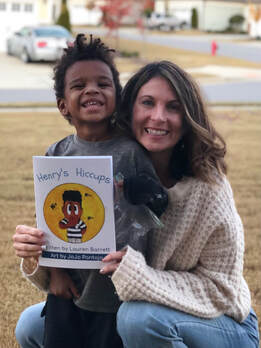

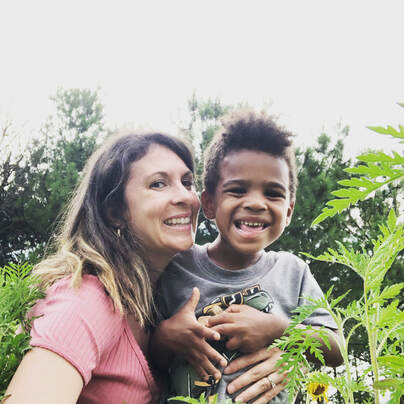
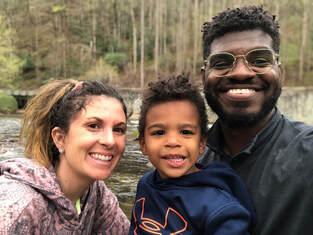
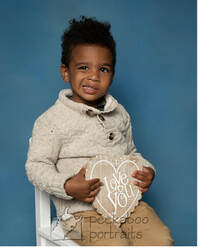



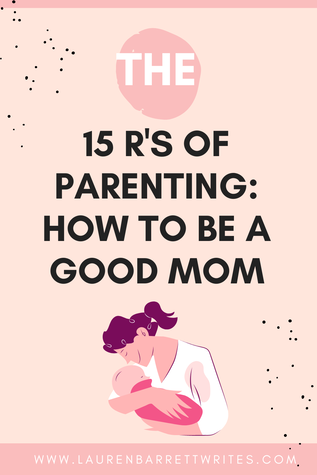

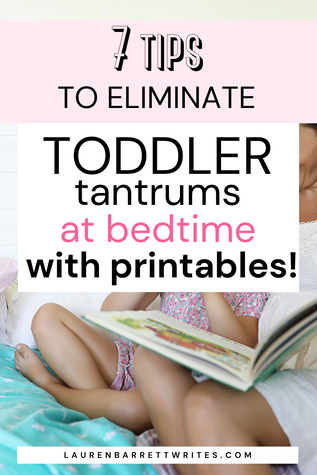
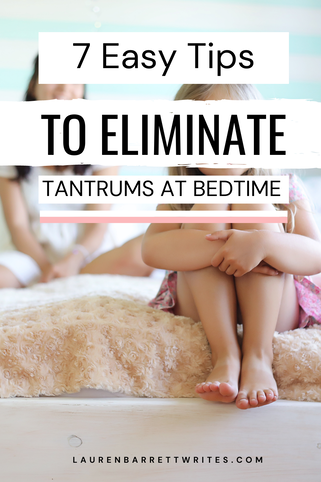
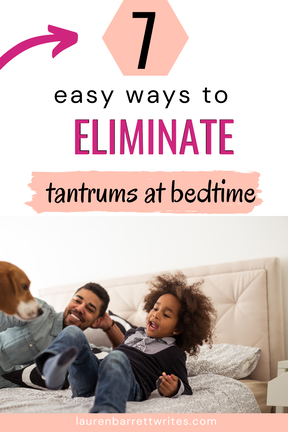
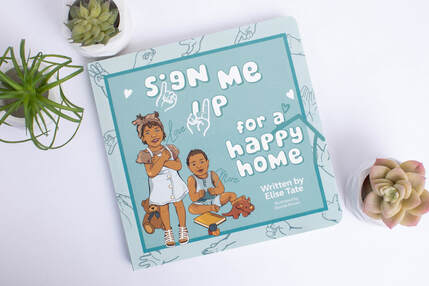
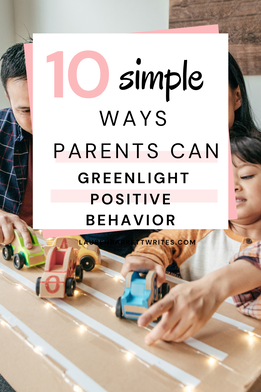


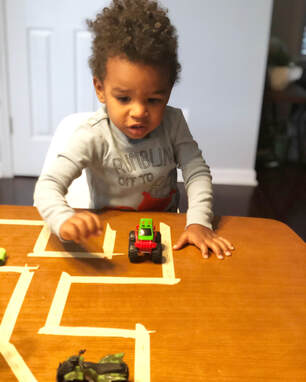
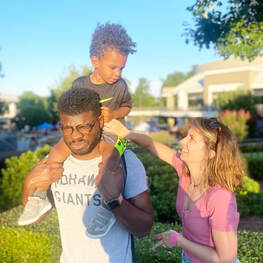
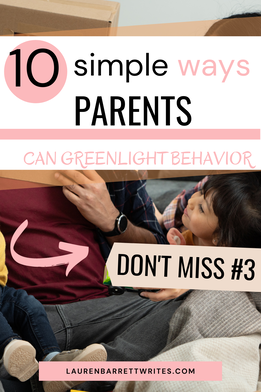
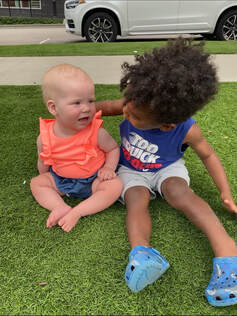
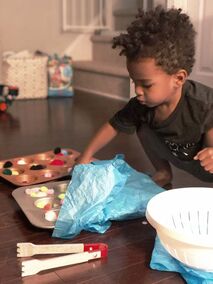
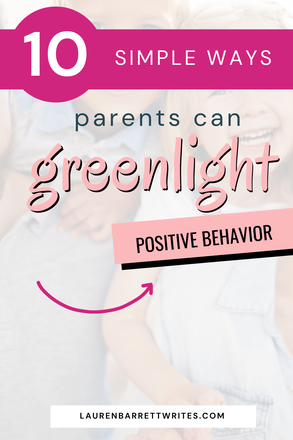

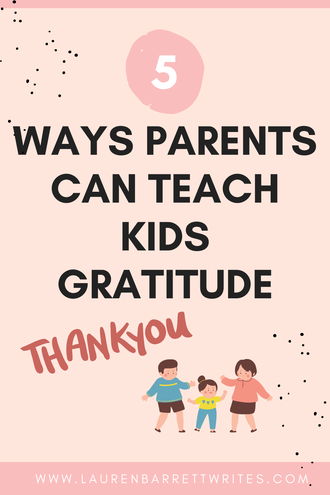


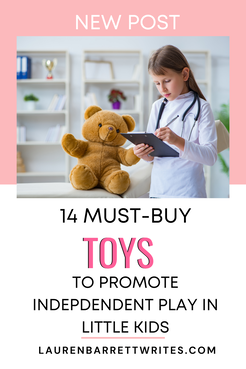
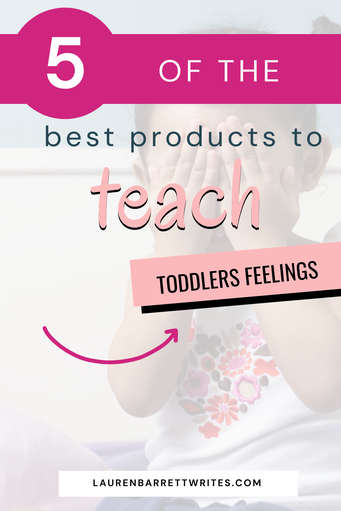


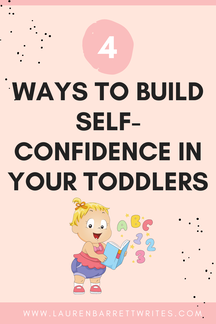
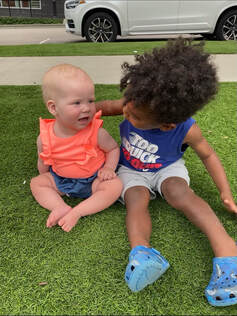
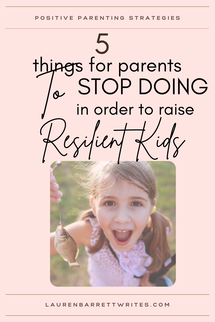
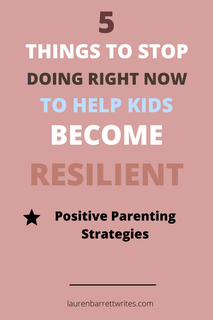
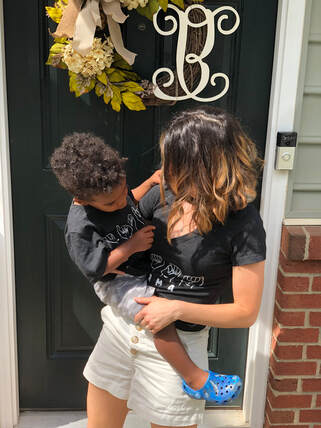

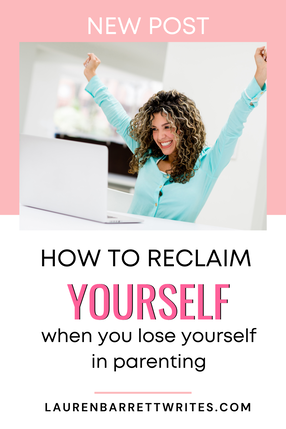
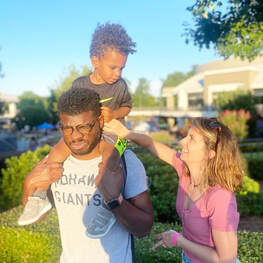

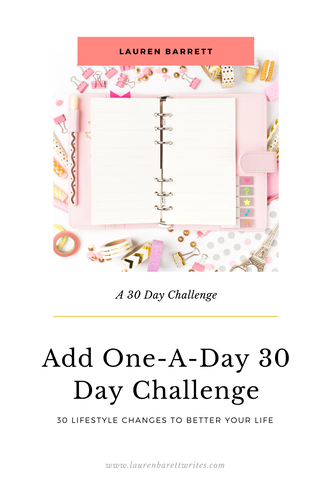
 RSS Feed
RSS Feed